FR ANCHISEUpdate
ISSUE 3, 2023
October 18-20, 2023
Brokers’ role in frandev keeps expanding Private equity powers franchising growth

ISSUE 3, 2023
October 18-20, 2023
Brokers’ role in frandev keeps expanding Private equity powers franchising growth
• Deliver food to tables and return dishes to the kitchen.
• Give staff the time and flexibility to elevate guest experiences.
• Improve operational efficiencies from the kitchen to dining room.

• Boost job satisfaction, helping you retain your best employees.
• Expand growth opportunities for your restaurant business.
LG CLOi ServeBot is a prompt and stable serving partner for any restaurant, from fast casual eateries to busy dining rooms. This autonomous, smart robot handles the simple, repetitive tasks—so your team can focus on what’s most important. Trust LG CLOi ServeBot to help you: Learn



Thryv software is designed to make it easy for you to manage your franchisees’ operations — all in one place.
With Hub by Thryv, running multi-location businesses has never been easier. Thryv gives you back hours in your day so you can:
View a single operational dashboard with real-time tracking and analytics across every location
Connect to apps you already use Track revenue and performance of all locations

Standardize your brand, and drive consistency across all locations
Streamline communications and payments

And much more
With Thryv’s 24/7 support, you can’t go wrong. Learn more at Thryv.com/franchise
AI was everywhere at the 5th annual Franchise Customer Experience Marketing Conference in Atlanta this past June.

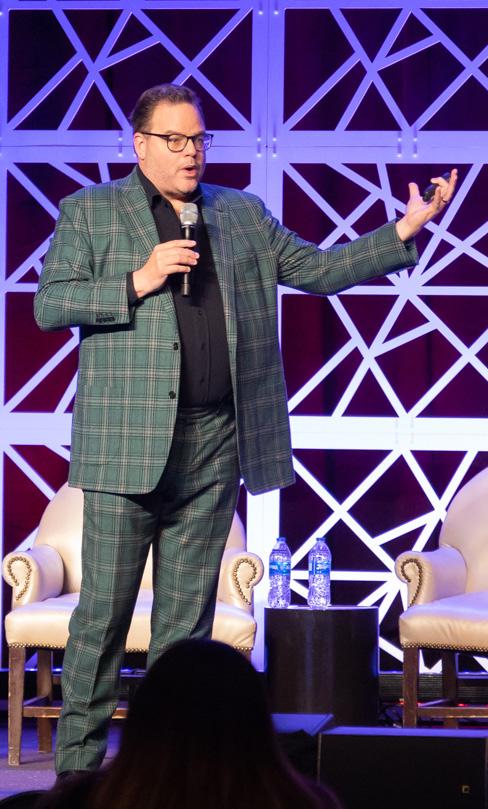
As strategic partners, PE firms are providing direction and support, as well as capital, to power franchise brands to accelerated growth.



Issue 3, 2023
06 FROM THE EDITOR’S DESK Rah, rah, rah for ROI!
08 LEADERSHIP
CEO Profile: Catherine Monson, Propelled Brands Casting a “leadership shadow”
14 LEADERSHIP CEO Profile: Charles Bonfiglio, Tint World From franchisee to CEO
42 CONSUMER MARKETING Marketing Leadership Award
Denny’s wins the top 2023 marketing prize
44 CONSUMER MARKETING Operations & Technology Leadership Award
Dickey's brings home the bacon
46 CONSUMER MARKETING FCXC Expands Technology tops the bill
52 CONSUMER MARKETING CMO Q&A: Mimi Somerman
Bubbakoo’s Burritos hires its first CMO
56 CONSUMER MARKETING CMO Roundtable
“What are the key parts of your crisis communication plan, and how do you implement them?”
22 CONSUMER MARKETING Annual Franchise Marketing Report
Highlights from the 2023 AFMR
30 CONSUMER MARKETING
5th Annual Innovation Awards
Celebrating the best of the best
CHAIRMAN
Gary Gardner
CEO
Therese Thilgen
EXECUTIVE VP OPERATIONS
Sue Logan
EVP, CHIEF CONTENT OFFICER
Diane Phibbs
EVP BUSINESS DEVELOPMENT
Barbara Yelmene
BUSINESS DEVELOPMENT EXECUTIVES
Kry stal Acre Jeff Katis
Judy Reichman
58 CONSUMER MARKETING Social Media
How to improve your brand’s storytelling
60 CONSUMER MARKETING Customers Count
Does your staff have the courage to fail?
EXECUTIVE EDITOR
Kerr y Pipes
ASSOCIATE EDITOR
Eddy Goldberg
MANAGING EDITOR
M. Scott Morris
CREATIVE DIRECTOR
Cindy Cruz
DIRECTOR OF TECHNOLOGY
Benjamin Foley
WEB DEVELOPER
Don Rush
WEB PRODUCTION ASSISTANTS
Esther Foley Juliana Foley
62 GROWING YOUR SYSTEM
Private Equity
Private equity firms power franchise growth
68 GROWING YOUR SYSTEM
Going for Brokers
Brokers and FSOs are different beasts
76 GROWING YOUR SYSTEM
Social Recruitment
Connecting with prospects in 2023
82 GROWING YOUR SYSTEM
Challenge the Pros
“How do you identify if a prospect isn’t the right fit for your brand, and how do you let them know?”
86 GROWING YOUR SYSTEM
Sales Smarts
5 “power secrets” for awarding franchises
88 GROWING YOUR SYSTEM
Market Trends
Recalibrating your marketing plans
90 GROWING YOUR SYSTEM
International
Expert tips on overseas expansion
92 GROWING YOUR SYSTEM
How’s your funnel vision these days?
DIRECTOR, EVENT OPERATIONS
Katy Coutts
SENIOR SUPPORT MANAGER
Sharon Wilkinson
SENIOR SUPPORT COORDINATOR
FRANCHISEE LIAISON
Leticia Pascal
SENIOR GRAPHIC DESIGNER
Michael Llantin
VIDEO PRODUCTION MANAGER
Greg Delbene
EVENT OPERATIONS MANAGER
Chelsea Weitzman
CONTENT & MARKETING MANAGER
Taylor Williams
CONTRIBUTING EDITORS
Art Coley John DiJulius
Bill Edwards Evan Hackel
Matthew Haller Darrell Johnson
Jack Monson
CONTRIBUTING WRITERS
Helen Bond Colleen McMillar
Sara Wykes
Article Inquiries
editorial@franchiseupdate.com
Subscriptions
subscriptions@franchising.com
408-402-5681
there’s one path that stands out.
Without the right financing partner, it can be difficult for your franchisees to grow at their preferred pace.
That’s why exceptional franchise brands partner with ApplePie Capital.
Our growth-orientated loan product, ApplePie Core, provides a clear path to secure the best locations, preserve cash reserves, and get multi-unit expansions rolling way faster than SBA financing.
With $2B+ in funded loans and 50-state coverage, we’re a franchisefocused lending partner ready to help at every stage of the journey.
Let’s talk about how ApplePie Core can accelerate your brand’s growth plan!
Jamie Davis: 415.944.1534 | jamie@applepiecapital.com
ApplePieCapital.com/lets-talk
 Written by Kerry Pipes & Eddy Goldberg
Written by Kerry Pipes & Eddy Goldberg
Take our Innovation Awards cover story. For the 5th consecutive year, a panel of judges reviewed more than 100 entries to identify and recognize the brands that did the best job of creating and implementing original and successful innovation strategies and tactics. The brands had different goals—enhance the customer experience, streamline their processes, train and retain employees—but at the end of the day it was all about improving the ROI of their franchisees and their overall system. Another feature dives into how different franchise brands are using social media for franchise recruitment. The usual suspects—LinkedIn, Twitter, YouTube, Instagram, and now TikTok— have become strategic tools for attracting new prospects. When it comes to telling stories online to persuade a prospect to call, text, email, or respond to a Facebook post, there are few tools more effective than social media. Choose the right platforms at the right time with the right message, and bang, ROI!
Brokers are another critical source for franchise development. In this issue, we take a deep dive into the many forms of third-party recruitment and the difference between franchise brokers and franchise sales
organizations—and yes, there is a difference. We also asked how franchisors can make the most of the ever-increasing fees they pay for these services. (Did someone say ROI?)
Then there’s private equity, which is all about ROI. PE now plays a key role in a growing number of franchisors and franchisees alike, with an eye firmly fixed on the return they hope for from the time and money they pour into their investments. In addition to capital, PE partnerships can provide high-level management, industry-specific expertise, and other forms of support to help their investments prosper and grow. (Need I say “ROI”?)
As Josh Wall, chief growth officer at Unleashed Brands (which is owned by a PE firm), put it, “Each situation is going to be unique. In many cases when PE is looking to make that strategic investment, it’s looking to help the management team install new processes and systems that can help serve the franchisees at a higher level. So those franchisees get greater support, become more streamlined, and more profitable.” ROI, there you go again.
If you haven’t already done so, there’s still time to register for the Franchise Leadership & Development Conference. There will be the usual great speakers, timely and topical content, and extraordinary opportunities for networking. Join us at the InterContinental Buckhead Atlanta, October 18–20. The investment of time and travel will more than justify the return you will gain from attending.
As I reviewed the content in this issue one more time, I was struck by the recurring theme of return on investment (ROI). Every time I looked at an article or column, ROI seemed to creep in—and why not? After all we’re all in business and “Money makes the world go round.”















Company: Propelled Brands
Brands: 765 Fastsigns, 285 Suite Management Franchising, 33 NerdsToGo
Years in franchising: 40
Years in current position: 14
With more than four decades in franchising, Catherine Monson is a well-recognized name in the franchise community. She has been at the helm of Fastsigns since 2009, and in 2021 oversaw the formation of Propelled Brands, which includes Fastsigns, NerdsToGo, and Suite Management Franchising (My Salon Suite and Salon Plaza). In addition, she has been recognized with the IFA’s prestigious Bonny LeVine Award and has been chair of the IFA twice. She was even featured on the CBS TV show “Undercover Boss.”

She is a consummate leader and has the skill set needed to oversee an organization with more than 1,000 franchised locations
worldwide. “I want to cast a ‘leadership shadow’ in such a way that even when I am not around, my team knows how to solve problems and make decisions in line with our company values,” she says.
Under Monson’s leadership, Propelled Brands is characterized by a growth-oriented culture that prioritizes fostering integrity and positivity throughout the organization. “I believe in the power of positive thinking and goal-oriented behavior,” she says. “Visual displays, such as our ‘Inspiration Hall’ at the corporate office, inspire and motivate employees, franchisees, and visitors.” She says expressing gratitude, celebrating milestones, and recognizing team members and franchisees is essential to how she leads.
Monson says the future looks bright for Propelled Brands. “We believe that all of our brands are going to continue to grow. We’re having a successful year in franchise sales with all three brands and have strong same-center sales growth or occupancy growth in all three brands. We believe that the more proactive you are the better the results will be.”
With three brands presently under the Propelled Brands umbrella, Monson says the company is looking to acquire two more in the next 18 months.
What is your role as CEO? My key roles and responsibilities are to create the strategic vision for the company and clearly communicate it; to drive for results; to build high-performing teams; to recruit and develop outstanding talent; to lead and manage change; and to lead by example. I need to set very high standards for myself, fulfill them, and lead with the example of personal excellence.
How has Covid-19 affected the way you have led your brand? Leading through the pandemic pushed me to be an even stronger leader and was one of the greatest learning experiences in my time as CEO. This experience further reinforced my belief that a positive mindset is the key to devel-
Catherine Monson“I truly enjoy creating a growth-oriented, positive culture and leading the team and the company to meet goals and achieve success.”
oping the skills you need to be resilient and courageous and to lead successfully. While leading Fastsigns through the pandemic, I also had the opportunity to serve as the chairwoman of the IFA in both 2020 and 2021 as we strove to make a positive impact throughout all of franchising.
Describe your leadership style. Leadership is about vision and strategic focus, the ability to clearly communicate a compelling vision, aligning goals of different departments and different brands, and being an innovative thinker. Another critical part of leadership is driving for results. A good leader does create some tension in the organization to drive even greater results. Another big part of leadership is building high-performance teams. It starts with selecting strong team members and providing them the tools, training, and development to further excel. Then it includes setting goals, holding people accountable, and creating the environment where people’s natural motivation is released. I also think it’s critical for a leader to always have a positive attitude and to project confidence. And sometimes you have to fake that. I think it’s important to learn how to handle conflict effectively and lead through personal experience.
What has inspired your leadership style? I am deeply grateful to my former boss and long-time mentor, Don Lowe, CEO of Franchise Services, the franchisor of TeamLogicIT, Sir Speedy, PIP, and MultiCopy. His example taught me what true leadership looks like, as well as the best practices in franchising.
What has been your biggest leadership challenge? Leading through the pandemic was one of my greatest leadership challenges. During weekly video calls, we covered how to comply with the CARES Act, how to apply for PPP loans, how to prove Fastsigns centers were an essential business, and how to operate during the pandemic with as many employees as possible working remotely. We also pivoted to create new products and services for our franchisees to sell and covered that in our weekly video calls. I also decided to focus not just on informational communication, but on inspirational communication as well.
How do you transmit your culture from your office to frontline employees?
I truly enjoy creating a growth-oriented, positive culture and leading the team and the company to meet goals and achieve success. I reinforce our company values at every meeting, and I live the values. We use our values in the hiring process, ensuring that our values are understood well before we hire someone, and in giving candidates the opportunity to select, or de-select, based on whether they are motivated and can fulfill our values. Our performance appraisal system is based on our company values, further reinforcing them.
How can a CEO help their CMO develop and grow? It should all be tailored based on the experience, strengths, and weaknesses of the individual CMO. I believe it is critical to clearly define the goals and expectations for the business and the marketing function. It is important for the CEO to foster open communication with the CMO and to
provide the resources and support they need to be successful. In addition, I believe in encouraging professional development through relevant conferences, seminars, workshops, executive coaching, and leadership development programs. I also believe in encouraging collaboration between the marketing department and other departments. It’s important to ensure that the CMO is exposed to and has a full understanding of the workings of the entire organization. And, as with all of my team, I believe it is important to recognize and reward achievements.
Where is the best place to prepare for leadership: an MBA school or OTJ? That would definitely be on the job, making sure you’re an expert in your industry or whatever you’re managing. You can’t do a great job leading people if you don’t understand what they do.
Are tough decisions best taken by one person? How do you make tough decisions? In any organization, there ultimately is going to be one person responsible for the tough decisions. I think the more you develop leadership skills, the more leaders you develop as well. But when push comes to shove and the tough decision needs to be made, it’s usually best made by one person. Now, it’s probably good to involve other executives in that tough decision and work to get buy-in, but you can’t run a company on buy-in alone. I think about what’s best for the company and all of the stakeholders. I have private equity owners, franchisees, and team members, and I have to balance all of their interests for the long-term benefit of the company.
Do you want to be liked or respected?
Leadership is not a popularity contest. Leadership is about making tough, correct decisions. Not everybody’s going to like the right decisions, but it’s important they be made. I’d much rather be respected than liked. But I wouldn’t mind people liking me as well.
Advice to CEO wannabes: 1) Exercise your mind daily. Fuel it with positive messages, maintain a journal of uplifting quotes, and stay updated on industry trends. 2) Create a positive culture. At Propelled Brands, we prioritize fostering integrity and positivity throughout the organization. I believe in the power of positive thinking and goal-oriented behavior. 3) Master prioritization. Delegation and efficient time management are crucial for leaders. 4) Embrace adversity. During the Great Recession, I initiated a
Leadership is not a popularity contest. Leadership is about making tough, correct decisions. Not everybody’s going to like the right decisions, but it’s important they be made. I’d much rather be respected than liked. But I wouldn’t mind people liking me as well.
28-city “town hall” tour, improving communication, listening, and implementing strategies to turn the company around. 5) Keep your body healthy. Leading a company is demanding and requires stamina and energy. Your body is your most priceless possession. 6) Pursue a passion outside of work. Engaging in activities such as yoga, running, or horseback riding can rejuvenate your mind and boost productivity when returning to work.
Describe your management style. I avoid micromanaging unless I have an underperforming team member. In such cases, I provide specific feedback, coaching, and temporary micromanagement to help achieve the business unit’s goals. Fortunately, micromanagement is rarely necessary for me.
What does your management team look like? We have a diverse, smart, confident, knowledgeable, and motivated team that lives our company values.
How does your management team help you lead? Throughout my career, I have had the privilege of working with exceptional leaders who possess unique strengths and expertise. I consistently emphasize to them the trust I place in their ability to make optimal decisions for the company. Additionally, our senior leaders are present to provide encouragement, support, and guidance, stepping in to help whenever needed.
Favorite leadership gurus: Do you read books on leadership? Some of my favorite books on leadership are John Max-
well’s The 21 Irrefutable Laws of Leadership, Simon Sinek’s Start with Why, Rudy Giuliani’s Leadership, Napoleon Hill’s Think and Grow Rich, John Wooden’s Wooden on Leadership, Jocko Willink and Leif Babin’s Extreme Ownership, and Stephen Covey’s The 7 Habits of Highly Successful People. What makes you say, “Yes, now that’s why I do what I do!”? I get to make a positive difference in people’s lives, and it has allowed me to develop relationships with thousands of franchisees. I also believe my calling is to support those facing challenges, whether it is a health battle or loss of a loved one. I believe I am on this earth to provide love and emotional support to those dealing with challenges.
What trends are you seeing with consumer spending habits in your businesses? All three of our brands are B2B, so we look at our customers’ spending habits. In the Fastsigns business, our customers remain concerned about having great signage and visual graphics that inform, direct, and sell. In the NerdsToGo business, our small B2B customers are looking for a resource that will act as their outsourced VP of IT. In the My Salon Suite business, our members are looking for a place to run their own business out of a suite they can personalize, that’s near where most of their clients are, and is safe and secure.
How is the economy driving consumer behavior in your system? Our B2B customers feel positive about the future. They
want to continue to grow their businesses, and they’re looking to each of our three brands to help them successfully do that.
What are you expecting from your market in the next 12 months? Employment continues to grow, unemployment is low, and consumers are still spending. All of that drives the small-business economy. At the same time, I think there will be a recession. The question is when? You want to make sure that you are building up cash on your balance sheet and improving your quick ratio and your current ratios so you can weather a tough time.
Are your franchisees bullish or bearish about growth and adding units? They are bullish. Our franchisees are highly optimistic and recognize the growing demand for our solutions in their respective local markets. They are diligently striving to meet this demand, demonstrating their commitment and dedication. The primary challenge lies not in generating demand, but rather in expanding our capacity to fulfill it.
What time do you like to be at your desk? Before 9 a.m. I can even surprise myself and sometimes get there before 8 a.m. But I would much rather start answering some emails, thinking about the day, and preparing for the day at home, and then getting to the office before 9.
Exercise in the morning? Wine with lunch? I’ve never met a morning I like. However, as a leader, I need to start the day strong. My typical morning is when my trainer shows up at 5:30 a.m. at my house. A typical day starts with me getting up 45 minutes before that, getting a little caffeine, and preparing for an hour-long workout before getting ready for work. I don’t drink wine with lunch unless I have the opportunity to nap the rest of the day because day drinking wipes me out.
Do you socialize with your team after work/outside the office? We have what we call “team week,” where we bring all of our team members in for a week of training, and I really look forward to the social events we have with them. I have times when I socialize outside the office with my executive team. I also think that, as leaders, it’s important that we respect our people, love our people, and care about our people. But we always have to keep the business top of mind.
I get to make a positive difference in people’s lives, and it has allowed me to develop relationships with thousands of franchisees. I also believe my calling is to support those facing challenges, whether it is a health battle or loss of a loved one. I believe I am on this earth to provide love and emotional support to those dealing with challenges.


Last two books read: Radical Candor by Kim Scott and Change Your Brain Every Day by Daniel Amen.
What technology do you take on the road? I can’t go anywhere without my laptop and my cell phone. I take a portable expandable monitor if I want to have three screens going at the same time. Sometimes I take an external video camera so I can have better image quality, particularly if I’m doing an interview.
How do you relax/balance life and work? Most people would look at my life and say I have little to no work/life balance. However, I love my life. At the end of the vast majority of days and weeks, I feel energized. To relax on the weekends, I love going hiking or running. I love being outdoors. I am a member of Stretch Zone and get at least two stretches a week. I find these stretches more relaxing than a massage. I love to travel and have dinner parties at my house.
Favorite vacation destinations: The best trip I ever took was to Africa, where I went to four countries. I was in the wild literally every day for two weeks. I certainly love every place in Europe that I have visited. I also enjoy Tahiti, Hawaii, and Cabo San Lucas.
Favorite occasions to send employees notes: I send about 2,000 birthday cards a year. I send notes to employees on their anniversaries every year. Whenever something exciting happens in an employee or franchisee’s life, such as having a baby, having a grandchild, getting married, or getting engaged, I send notes. If a friend, employee, or a franchisee is facing cancer, they’re likely going to get a card a week from me. If somebody loses a family member or somebody they love, I send a condolence card as well as additional cards afterward. I love sending graduation cards with a gift card to my employees’ children when they graduate high school and college.
Favorite company product/service: I am a big tea drinker, but I only drink English breakfast tea by Tazo or Teavana. While I love how coffee smells, I hate how it tastes.
What are your long-term goals for the company? We want to keep growing the brands in our portfolio and look to add more brands to our portfolio.
How has the economy changed your goals for your company? We believe

that all of our brands are going to continue to grow. We’re having a successful year in franchise sales with all three brands showing strong same-center sales growth or occupancy growth. Our Fastsigns and NerdsToGo franchisees are being more proactive with outside sales, and our My Salon Suite franchisees are being more proactive in the marketing and outreach they do to fill any suite they have open.
Where can capital be found these days? There is no question that there is a tightening in the capital markets. However, Propelled Brands is blessed in that we have outstanding relationships with knowledgeable lenders that understand the franchise space and understand the high success rates we have. So Fastsigns, NerdsToGo, and My Salon Suite franchisees have great access to capital.
How do you measure success? By setting high goals and achieving them in all areas of my life.
What has been your greatest success? I would say managing Fastsigns International, Inc., during the pandemic, while concurrently leading the IFA as chair for two consecutive years and advocating on Capitol Hill to protect the franchise business model.
Any regrets? None.
What can we expect from your company in the next 12 to 18 months? We hope to acquire at least two more brands and continue to grow the three brands we currently have.


Company: Tint World
Units: 140
Age: 61
Years in franchising: 40
Years in current position: 16
Tint World CEO and President Charles Bonfiglio knows what it’s like to be a franchisee. That’s because the Brooklyn native stumbled across the Meineke brand and found franchising as he started his career in business. He became very good at operating a Meineke franchise, growing into a 10-unit operator. Throughout his years with the brand, he was one of the company’s top performers, recognized with countless awards. Then, in 2006, he came across an opportunity to purchase a small Florida-based business called Tint World, and he set out to franchise the company.
What was once just a car window tinting company has now grown to 140 locations
offering automotive, residential, commercial, and marine window tinting, security film services, and more. And Bonfiglio has even higher aspirations.
“I want to get 600 stores open in the United States,” he says. “That’s the number I see that will fill up the marketplace and make us a household name in every market.”
Bonfiglio is not afraid to roll up his sleeves and work closely with his team at headquarters. On any given day, you might find him at work with the marketing, operations, development, and real estate teams. “I make sure they have the right mindset, support them, and help them grow,” he says.
He’s a driven leader and a voracious reader. “I read 20 to 30 business books a year and always take something away from each,” he says. “I don’t want to waste that time. I want to learn something.”
There’s also a fun side to Bonfiglio, such as his extensive collection of fashionable sneakers. “I like buying sneakers,” he says. “I have at least 30 pairs of dressy designer sneakers that I can wear to the office with jeans and a Tint World shirt.”
What is your role as CEO? To lead the vision of the company and empower people around me to do their best. I probably do more than most executives on the creative side, working with the marketing department to keep the brand consistent. I work with the operations team to make sure the culture they share with franchisees is good. I work with the accounting team, the franchise development team, the training team, and the real estate team. That’s a little of what I do.
How has Covid-19 affected the way you have led your brand? As an essential business, Tint World’s doors remained open throughout the onset of Covid-19. We were also one of the first in our industry to offer disinfectant and antimicrobial services to our customers with complimentary treatment for our communities’ first responders. By leveraging a multi-channel communica-
“My leadership style is based on supporting my team with the right mindset.”
tion strategy, our team created awareness campaigns informing customers that our centers were following all recommended best practices by the Centers for Disease Control and Prevention. As a result, in 2020 Tint World had one of its most successful years on record.
Describe your leadership style. I think that my leadership style is based on supporting my team with the right mindset. No one in the company had experience in the franchise industry before joining Tint World, so I’ve been able to train my staff to do things the way I think they should be done.
What has inspired your leadership style? Why do I do it that way? Because I was a franchisee first. When I was a franchisee, I built 10 locations and worked closely with the franchisor. I helped them with all aspects of development. I was a test center for expanding services. I helped them develop their first point-of-sale technology system. I learned from them and grew from one location to 10. After that, I felt like if I treated my team and my franchisees the way they want to be treated, they would know I’m all about their success.
What is your biggest leadership challenge? Not knowing what I don’t know. I didn’t come from the corporate world. Our company is growing, and I find I actually need some higher-level leadership skills in the various departments. But I just grind every day, and I’m always learning.
How do you transmit your culture from your office to frontline employees?
The way I treat my team members in the office translates to the operations team in the field and then to the franchisees. They see the family relationship that we have in the office from the very first discovery day when they come into the office and meet us. One of the reasons I think they choose us is that they want to be part of that family. They know we really care. That’s really big.
The whole Tint World family sees that I want to give them the best. I’m always celebrating wins with them and helping them grow as fast as they want to grow. I don’t care if they call on the weekends or at night. I’m excited to hear from somebody who wants to grow.
How can a CEO help their CMO develop and grow? I’m very involved with marketing and branding. Everything with the Tint World brand on it, I have final approval. I don’t run it like a typical company where they just throw money out there and see where it goes. I look at the statistics and the return on investment. I want the highest return possible for our franchisees. I’m very selective and want to maximize value for franchisees and for the company.
Where is the best place to prepare for leadership: an MBA school or OTJ?
You know, my first instinct is to say on-thejob experience. But like I said before, I don’t know what I don’t know. I didn’t go to an MBA school, and I’ve done just fine learning and growing. I started behind the counter, worked out on the floor, owned one store, then two, and started developing property. I just learned how to build a company. I don’t
have an MBA, but there’s nothing that holds me back.
Are tough decisions best taken by one person? How do you make tough decisions? Typically, I’ll talk to my wife, Jeanette. I don’t always do what she says, but she gives me guidance. Sometimes I’ll talk to one of my peers and get some feedback. For the most part, I make the final decision on everything I do.
Do you want to be liked or respected?
It’s nice to be liked but respect is really important because they can like you but not respect you.
Advice to CEO wannabes: It’s not for the faint of heart. It’s never-ending, continuous improvement and advancement. You’re the guy who deals with every single problem or obstacle. I’ve never come across anything I couldn’t handle. I just keep going. But it’s not for everybody.
Describe your management style. What does your management team look like and how do they help you lead? I have a leader in each department. They all deal with me directly on how they operate that department. I give them guidance, leadership, and vision. I never really considered myself a top management guy. The leadership skills outweigh that. I don’t micromanage. My team knows how I lead and what my vision is, and they carry that out. That’s how I do it.
Favorite management gurus: Do you read management books? I read every kind of management and leadership book, and I’m always listening to audiobooks when I’m jogging, going to the gym, or in the car. Some of my favorites are Good to Great: Why Some Companies Make the Leap... and Others Don’t by Jim Collins, Traction: Get a Grip on Your Business by Gino Wickman, and The Four Obsessions of an Extraordinary Executive by Patrick Lencioni.
What makes you say, “Yes, now that’s why I do what I do!”? The success of our franchisees. That’s why I do what I do.
What trends are you seeing with consumer spending habits in your stores? I think they’re paying more attention to their cars. They’re buying more protective services because they’re keeping them longer.
By leveraging a multi-channel communication strategy, our team created awareness campaigns informing customers that our centers were following all recommended best practices by the Centers for Disease Control and Prevention. As a result, in 2020 Tint World had one of its most successful years on record.
How is the economy driving consumer behavior in your system? I really haven’t seen a big dramatic change recently. What are you expecting from your market in the next 12 months? Continuing growth. We’re growing, and brand awareness is getting stronger.
Are your franchisees bullish or bearish about growth and adding units? Sixty percent of them are bullish and 10% are bearish. The rest are in the middle, maintaining their stride.
Are commodity/supplies costs any cause for concern in your system? They have not been.
In what ways are political/global issues affecting the market and your brand? I block out all the noise and focus on development. I really don’t get affected by what goes on outside of my focus.
What time do you like to be at your desk? I’m usually in my office at about 5:20 every morning. The reason I’m not there earlier is because Starbucks doesn’t open until 5 a.m. I leave my house at about five minutes to 5, get to Starbucks, have my four-shot dry cappuccino, and I’m at work by 5:15, 5:20. I like to be there early. It’s my creative time. I like to be the last one to leave as well, usually around 6. I only need about 6 hours of sleep: 11 p.m. to 5 a.m. That’s just my clock. Exercise in the morning? Wine with lunch? I exercise three days a week. Always on Saturday and Sunday. I rarely drink.
Do you socialize with your team after work/outside the office? I do. Every month or two, we’ll go out for dinner or bowling or a day on the beach to celebrate our wins. We’re always doing something. It’s really good team-building, and I also really enjoy their company.
What technology do you take on the road? On a plane, I take my Bose headphones and listen to audiobooks. I’ll bring my cellphone but not much more. How do you relax/balance life and work? Work is my balance. I enjoy what I do. To me, it’s a sport. I really love coming to work and building businesses and systems and growing franchisees. I love my scorecard: getting more stores open, same-store sales increases. I love watching my franchisees succeed and buy new cars, houses, and property. Everything that goes along with that is what I like to do. I don’t think of it as work.
Favorite vacation destinations: Up until the last few years, my wife, son, and daughter would go to the Breakers in Palm Beach for the Fourth of July. And we go to New York City for Christmas and New Year’s to watch the ball drop.
Favorite occasions to send employees notes: When I see they’re doing something exceptionally well or taking time to be more thoughtful about what they do, whether it’s for a franchisee or someone else in the office. That means a lot to me.
Favorite company product/service: I like buying sneakers. I have at least 30 pairs
of dressy designer sneakers that I can wear to the office with jeans and a Tint World shirt. I’m very comfortable like that.
What are your long-term goals for the company? I want to get 600 stores open. That’s the number I see that will fill up the marketplace and make us a household name in every market. I also want to make every franchisee wealthy, and I want to see my team members grow and succeed.

Where can capital be found these days? Growing the way we are, money comes at me from every direction. Everybody wants to invest or buy or partner with us.
How do you measure success? Is the value of Tint World increasing? Are the lives of my wife and kids getting better? Are they getting the best out of life? Those are the things that are most important to me.
What has been your greatest success?
In business, my greatest success has been creating Tint World, building a brand that I love and that other people love, and then sharing the wealth with all my franchisees. In life, I have two great successes: raising my daughter and son and putting them through college. They’re both smart and really good people. And I’ve been married to my wife since 1984.
Any regrets? Not many.
What can we expect from your company in the next 12 to 18 months? A lot of growth. That’s the way it’s always been. It’s going to be fun and interesting.
We’re designed to support Franchises, enabling you to market, manage, govern, produce and distribute—locally to across the globe —with ease.
We bring together local marketing capabilities, brand management and complete production capabilities to create an elevated brand experience across any channel—online, offline or in-store—all while simplify vendor management.
ҟ Manage your brand (and assets) with ease
Ή Empower franchisees to market locally
Be brand compliant with modular templates
̏ Govern user access to funds with tech controls
Ȇ Ensure print quality with commercial print including POS & POD

Before 1951, no one thought to eat thinly sliced, melt-in-your-mouth roast beef in sandwich form… that is, until the birth of Kelly’s Roast Beef. Roast beef sandwiches were often made from leftover roast beef from Sunday dinners that was sliced thin and served on a bun. However, it was Kelly’s that revolutionized the sandwich by slow roasting the beef to perfection and serving it with their signature gravy, which elevated the sandwich to a whole new level.
As the originator of this sandwich, the brand grew a loyal following with a rich history that now spans more than seven decades. Kelly’s Roast Beef became a staple in Boston’s North Shore area and was even mentioned in the movie Good Will Hunting. Today, Kelly’s has grown to several locations across Massachusetts, New Hampshire, and Florida, each serving up the same delicious roast beef sandwiches that have made the brand a household name.
In the fast-casual food world, branding is everything. A strong brand can make or break a franchise, and it is crucial for any company to constantly think of new ways to improve or evolve its brand. At Kelly’s, we recently went through the process of rebranding. With such a strong history and loyal fan base, we knew that it could be difficult to accomplish. However, rebranding has helped us find new ways to expand and reach a new audience. I would like to provide insights I have found during the process—and advice I wish I had known before embarking on our rebrand.
This year, we introduced a fresh, modern look with our iconic logo that still maintains
elements of the original design, preserving the connection to its history. The visual identity overhaul extended to our restaurants, which underwent a redesign, incorporating warm colors, inviting decor, and a more open layout. The aim was to create a welcoming and comfortable environment that provided a more enjoyable dining experience.
Embracing technology was another vital aspect of the rebranding strategy. We implemented new state-of-the-art kitchens to improve efficiency and provide our guests with the highest quality. With our new advancements in the technology space, we are providing our guests with an enhanced experience, aligning the brand with modern expectations.
One of our major findings during the rebranding process was deciding to embrace the changes and continue to highlight the greatness of the old. It is not easy to let go of the former ways of doing things and embrace something new and modern. Often, however, change is necessary for growth and success. We welcomed the new improvements that came with the rebranding, leading to further growth and success. Throughout the process, we updated our historic carousel-themed dining rooms, our marketing strategy, and even our logo. Embracing change allowed us to appreciate our historic brand while looking toward the future in a constantly evolving industry.
Embracing the changes during the rebranding process is important, but it is equally crucial to highlight the greatness of the old. If your business has been successful
in the past, there are many elements of the brand that guests love and that set you apart from competitors. Throughout the process, keep and maintain the key features in your new branding strategy and build upon them. We want to continue to highlight our famous original roast beef sandwich and other classic menu items because they are our main focal point and overall purpose. While focusing on the future and the rebranding, you also must honor and admire what has made your brand successful.
Through its journey from a humble sandwich shop on Revere Beach in Massachusetts to a successful roast beef franchise, Kelly’s has been able to exemplify adaptability and further its commitment to excellence. Rebranding your company’s strategy can be challenging, but it is a rewarding process that has helped us attract more guests, while still appreciating our loyal fan base.
Rebranding is a powerful tool for franchises in any industry, but doing it successfully requires strong leadership and a clear vision. By staying true to your core values and embracing the change—all while continuing to highlight the greatness of the old—you can successfully navigate the process and position your brand for long-term success. At Kelly’s Roast Beef, we have seen the benefits firsthand and are excited to continue to grow and evolve the brand in the years to come.
Neil Newcomb is CEO of Kelly’s Roast Beef.





In many ways, the paths and opportunities for growth in franchising have never been greater. With developments in point-ofsale technology, improvements in marketing techniques, and advances in bookkeeping technology, there is no shortage of innovation blazing a trail forward for the franchise business model. However, for every powerful innovation, it seems there is an equally powerful threat to franchising coming out of Washington, D.C., and state capitals across the country.
Legislation regulating the private relationship between franchisor and franchisee, politically appointed bureaucrats making decisions for QSR owners, inquiries from the FTC designed to build a one-sided narrative based on a small number of anecdotes, and more are threatening the franchise model every day. The IFA is on the front lines of these fights, educating members of Congress, federal regulators, elected officials, and even franchisors and franchisees around the country on how franchising is a force for good in nearly every community.
The aggression against franchising is often born from a lack of understanding, including the common misperception that franchises are all big businesses and should be regulated as such. Franchising is a model created for growth and to reach new markets and consumers. This business model has the unique power to provide aspiring entrepreneurs with the ability to own their own businesses when they might not have had the tools or ideas to do so on their own. The model bolsters business ownership around traditionally underrepresented communities. Franchising has led to the creation of nearly 800,000
businesses and, as IFA’s 2023 Franchising Economic Outlook showed, continues to grow at historic rates.
Franchising wouldn’t be seeing this growth if its business model weren’t working as well as it does. We’re not saying franchising is perfect, and there are certainly areas for improvement, but the proposals directly targeting the business model are misguided at best. At worst they are an outright attack on the business equity you’ve worked so hard to build.
Take, for instance, the case of Arkansas House Bill 1783. Before the IFA and hundreds of brands spoke out against it, the bill was written to insert the state government into the commercial contract between private parties. It would have been the most extreme franchise regulation of any state. Fortunately, after the franchising community spoke out, the bill that was signed into law was merely a technical change to existing law; the worst of the proposal was spared. Unfortunately, what starts in one state tends to spread to others as we have seen with California’s FAST Act. This is but one example of the many significant state-level threats that have arisen this year.
Now, franchising in California is facing yet another piece of legislation, Assembly Bill 1228. This legislation, which passed the Assembly on May 31 and was being considered in the Senate at press time, would establish joint liability between California QSR franchise brands with 100 or more locations nationwide and their independent franchisees. This is a direct retaliation for California voters speaking out to put the FAST Act on hold until they can have a say. Joint
liability would erode the heart of the franchise model and threaten the livelihoods and independence of tens of thousands of restaurants in the state.
And in Washington, D.C., the FTC just finished collecting comments through a recent RFI that consisted of a series of 75 questions on “Franchisors Exerting Control Over Franchisees and Workers” and clearly written with an outcome in mind. It is apparent this process was designed to yield incomplete and anecdotal accounts of franchise relationships rather than a holistic picture of franchising as it exists across the 800,000 franchised businesses in more than 300 industries. In addition, it could be used for future rulemaking against the franchise business model. To counter this, hundreds of franchisors, franchisees, and suppliers weighed in to share their positive franchise experiences, helping provide a more accurate and balanced approach than the FTC seeks.
With all these challenges and more on the horizon, the situation can seem daunting. But it doesn’t have to be. As we know, franchising creates opportunities for growth unlike any other way of doing business, and the single most important infrastructure for protecting your business is advocacy. Elected officials do not understand your business the way you do, and your voice makes the difference. Whether it’s the desired outcome in Arkansas, Californians stopping the FAST Act, or the franchising community working to ensure the FTC doesn’t harm their businesses, speaking out to policymakers and advocating for the issues that affect your livelihood day in and day out can change the game.
To this end, IFA is here to help connect you with your government representatives and increase your impact in any way we can, from our grassroots network of franchise advocates known as the Franchise Action Network (FAN) to our Open for Opportunity Roadshow. to our flagship D.C. event, the IFA Advocacy Summit this September. Franchising needs you, your voice, and your advocacy to continue growing, and with it, your business will thrive and grow too.
Matthew Haller is president and CEO of the International Franchise Association.

Results from the 2023 Annual Franchise Marketing Report (AFMR) were revealed this summer at the Franchise Customer Experience Conference, or FCXC. (See our feature on the conference elsewhere in this issue.)

The AFMR was created at the request of our FCXC conference advisory board to develop relevant content for CMOs and to learn more about their needs and challenges. Its purpose is to provide the data and analysis CMOs and other top marketing executives need to measure their success and learn how they can do better at a job that seems to get more complex with each passing year. (Think digital!)
The AFMR delivers invaluable benchmarking data that provides franchise consumer marketers with the insights they need to know how they stack up against other franchise brands and their industry. In short, the report is a unique resource franchise marketers can use to improve the effectiveness of their marketing efforts and make the most efficient use of their marketing budgets.
Data was collected from a group of marketing leaders at 65 franchise brands who each completed an in-depth questionnaire. Respondents’ roles ran the gamut: co-founder, CEO, president, COO, CMO, chief growth officer, VP of marketing, director of marketing, marketing and operations director, director of advertising, marketing and communications director, general manager marketing, director of digital marketing, and VP of franchise development. Their responses were aggregated and analyzed to produce an in-depth look into the marketing practices, budgets, and strategies of a wide cross-section of franchise brands and sectors.
What follows are selected highlights from the 2023 AFMR, which offers commentary and analysis that provides context, insights, and a detailed look into the data contained in the report.
Marketing teams at franchise brands are responsible for marketing to both consumers and business customers. This year, more than half (55%) were B2C marketers, with just 8% saying they market to B2B exclusively, and 35% saying they market to both. Service brands made up the overwhelming majority of respondents this year. (Could this be because they did so well during Covid and were glad to share their good news?) Seven in 10 (69%) of the 65 brands that completed the survey were service brands, with 40% of them brick-and-mortar, and 29% service- or territory-based. Another 24% were food brands, and 8% were non-food retail.
Rebounding from 3 years of Covid and perhaps encouraged by the working from home movement, leads and traffic count were up this year for nearly half (49%) of respondents. Collectively, one in five (22%) reported leads and traffic count were the same, while the same number reported they’d fallen year-over-year. Looking at lead-to-close ratios, digital marketing and referrals were highest across all general business categories. Leads/Traffic Count
Each year, we ask participants how they manage and measure customer experience (CX).
In 2023, as the economy remains uncertain, consumer wallets continue to shrink, and household debt keeps rising, discretionary spending is bound to be affected. (See FRANdata’s “Market Trends” column later in this issue for more on this topic.) That’s why finding ways for brands to measure CX and adapt to changing consumer behaviors has taken on greater urgency. Another issue for franchisors is assigning responsibility for tracking and measuring their brand’s customer experience. Some of the sessions at FCXC delved into how to do this better going forward.
their brand in January may no longer be working by June or September. External events—from the X-ification of Twitter to the advent of ChatGPT and GAI variations—can upset the best-laid plans. Then there are the ever-changing consumer tastes and preferences to factor in… if you can make an accurate guess at that fickle, moving target. But you must. These highlights show where marketers spent, and where they got the best results. And, of course, results vary by industry.
Social media. For the Retail Food and Retail Non-Food categories, social media was a prominent driver of consumer sales. For all categories, more business is being generated through company consumer websites. The question remains what drives people to those websites in the first place.
Digital sources. Respondents in the Food category reported that the following digital categories drove the most sales. In order of ranking, they were: 1) pay-per-click on search engines, 2) social media advertising, 3) search engine optimization, and 4) sponsored content.
Most general business category respondents increased their annual marketing spend. Digital advertising was the most effective in driving business, with social media second and email marketing third. Here’s how budgets broke down by industry and by number of units. (See table below.)
Choosing where to spend your marketing budget is an ongoing challenge. Marketers plan the best they can for the coming year, but know all too well that what worked for
Best sales platforms. Facebook, by a long shot, produced the most sales in all categories, with Instagram second. YouTube and Twitter (it still was Twitter then) were also strong drivers in the Food category. Most effective platforms. Respondents found the following platforms the most effective: Google Analytics, Yext, SOCi, Medallia, Chatmeter, Reputation. com, Rallio, HubSpot, Listen360, Consumer Fusion, Podium, Riso SEO, Moz Pro, ReviewTrackers, Merchant Centric, and company CRMs.
Top revenue generators. Pay-perclick, SEO, social media, and sponsored content were the top revenue generators among the general business categories. Remarketing and target trailing were not on the radar this year.



The survey asked respondents if they tracked acquisition costs per customer. Diving down by industry, Food and Retail Food were the lowest at 33% each, with Retail (non-food) the highest at 80%. Looking at number of units, there’s a clear pattern: the more units a brand has, the more they track their customer acquisition costs. (See table above.)
Increases in their number of locations, franchisees, and sales volume all play a role in how franchisors determine the size of their
internal marketing team. Requests from franchisees for more support also play into this decision. Respondents said that when demand increases sufficiently and their budget allows, they will hire additional staff. Some of those using advertising and marketing agencies indicated that when their agency spend exceeds the hiring and salary costs of a role, they will bring that role in-house. For brands that increased their staffing, most hires were related to digital marketing (no surprise there), followed by field marketing. (See Table A below.)
Food and Retail Food respondents reported the highest percentage of customer loyalty programs. Service categories had the lowest. That makes perfect sense. How many times do you visit a QSR brand compared with remodeling your bathroom or getting your house painted? The only other 100% Yes here was for brands with 500–1,000 units— which also makes sense, since they are almost guaranteed to be Retail Food brands. (See Table B below.)



One trend we’ve seen is greater participation in decision-making by franchisees at the more forward-thinking franchise brands. One of the key takeaways from the FCXC is for franchisors to consider not only a Franchise Advisory Council, but other ways for franchisees to become involved, such as a Franchisee Technology Council. Or, in this case, a franchisee advisory group focused specifically on marketing and advertising. After all, it’s their money, their market, and their customers—though getting them to fully participate in local marketing campaigns remains a challenge for many brands. (See table above.)
Getting franchisees to spend what a franchisor might consider the proper amount of time on local marketing is a perennial challenge—even though it’s generally money the franchisees have contributed to a marketing fund. Compliance can be challenging as well, as franchisors know all too well. As noted in previous years, local store marketing is often far from a top-of-mind task for busy franchisees, especially with inflation, labor shortages, and supply chain issues dominating their days (and nights). Nor is enforcing local spend mandates and recommendations high on the franchisor side these days, for many reasons. Perhaps a franchise advisory group for marketing and advertising would help! (See table below.)
Below is a sampling of comments from the 65 franchise brands that responded to this year’s AFMR survey (not ranked):
• Calculating customer acquisition cost without a proper CRM
• Fighting off useless sales pitches to local franchisees for unnecessary local marketing tools
• Managing investment against ROI
• Keeping up with tech/digital advertising changes
• Franchisee compliance and adoption
• Competition
• Process
• Franchisees distracted by the complexity of digital marketing
• Tight profit margins for franchise owners affecting their willingness to invest in marketing
• Reaching target market within budget
• Stricter privacy, so less effective targeting
• Fragmented audience, so having to keep up on multiple channels to find them
• Producing frequent and highquality engaging digital content
• Getting franchisees to manage their reviews
• Getting franchisees to stay on brand
• Marketing plan pivots
• New trends
• Changing market conditions
• Demonstrating the ROI of marketing efforts
• Changes in consumer behavior
This year’s Franchise Update Media Innovation Award winners were selected from a long list of entrants about franchise brands turning technological innovations and strategies into cost-cutting and time-saving efficiencies. This year saw more than 100 entries from franchise brands large and small, legacy and emerging. A choice few grabbed the top spots to earn the prestigious awards and recognition. The contest recognized two overall winners: Denny’s took home the Franchise Marketing Leadership Award, and Dickey’s Barbecue Pit won the Operations & Technology Leadership Award.
This category asked brands what innovative solutions they employed to grow consumer awareness, engagement, and loyalty—everything from traditional advertising and PR campaigns to social media, rewards programs, new product launches, and local store marketing campaigns.
Systems and processes, along with replicability and scalability, are essential for franchising success. And who could do all that without advanced technology? Judges reviewed the most forward-thinking operations teams and how they improved and streamlined their processes and practices through innovation in the aftermath of the pandemic.
A panel of expert judges evaluated each entry’s objective, the problem it solved, and the innovations required to achieve the stated goals. Winners in each of the four main categories and 22 subcategories are highlighted in the following pages. The four major categories are Marketing & Branding, Operations & Technology, Products & Services, and Human Resources.
To meet the needs of today’s consumers, franchise systems must evolve along with what customers want in products and services—and in how they want them delivered. For many entrants, technology played a huge role in adapting to how customers ordered, paid for, and received their products or services in 2022.
Growing a great brand requires the best people at every level. This category examined how brands employed unique, innovative strategies and tactics to attract, hire, train, and retain the employees who best suited their vision and culture.
OBJECTIVE: When Covid forced many Kumon Centers to close, the company needed to address parents’ concerns about the disruption to their children’s education. The corporate team felt the brand voice and visual identity had gotten lost, and franchisees were unhappy with the current creative campaign. The brand needed a fresh and authentic creative campaign that reminded parents of its proven program and value.
OVERVIEW: Research showed that Kumon had a brand awareness issue among parents anxious about their children’s education. However, its ads were difficult to distinguish from those of competitors. Curious Jane wanted to communicate to moms that Kumon understood them and could help their children build successful lives. The agency’s team identified two target personas: Millennial Maya, a younger, well-educated mom, and Forties Faith, a mom who had waited to have children until after she had established her career. Kumon launched a new creative campaign, Practice Makes Possibilities.
RESULTS : The campaign resonated strongly with parents, franchisees, and children. Goal 1: Increase traffic to Kumon.com by 20% year over year; in 2022, there was a 50% increase in web sessions over 2021. Goal 2: Optimize campaign and the salesforce lead management process to achieve at least a 20% increase in booked parent orientations year over year; in 2022, there was a 23% increase in booked orientations over 2021. Goal 3: Achieve at least a 10% increase in new student enrollments or additional subject enrollments for existing students; in 2022, there was a 10% increase in new student enrollments or new subject enrollments, the highest number of new enrollments in more than 40 years.
OBJECTIVE: We needed to design a digital lead acquisition campaign that adhered to Dogtopia’s brand standards and overall marketing strategy, while also ensuring it could be independently customized, funded, and deployed by each franchisee to suit their individual needs and help them grow their local business.
OVERVIEW: We chose to employ Facebook, Instagram, and search engine advertising to create a cross-platform integrated campaign. We employed a proprietary digital advertising platform to create, localize, and measure the campaign.
RESULTS: The strategy achieved all of the company’s objectives, allowing local franchisees to deploy, fund, and measure their own lead-generation campaigns within a common branding and messaging approach. Local franchisees invested more than $2 million in advertising during 2022. With that investment, we achieved the following social/search advertising results: 185 million impressions, 107,645 leads, a $0.77 cost per click, a 1.4% clickthrough rate, an $18.65 cost per lead, and a 4.1% conversion rate.
OBJECTIVE: Denny’s is “America’s Diner,” a place shaped by a simple philosophy: “We Love to Feed People.” This is the Denny’s purpose, and it serves as the resounding rallying cry throughout the organization, from team members in the restaurants to those working in our corporate office. But what happens when disaster strikes? When our communities are dealing with a debilitating crisis, can Denny’s serve a slight bit of comfort during a most difficult time?
OVERVIEW: The Mobile Relief Diner is a 53-foot semitrailer with a full kitchen that allows our team members to quickly travel anywhere in the U.S. to feed those suffering in the wake of disasters and emergencies. During these deployments, the Mobile Relief Diner provides warm meals to the affected communities. Our goal is to feed the body as well as the mind and soul.
RESULTS: Since the inception of the program in 2017, the Mobile Relief Diner has traveled more than 51,000 miles and served almost 102,000 meals to those affected by natural disasters, including hurricanes Harvey, Ida, and Ian; wildfires in Paradise City, California; tornadoes in Nashville; and floods in Hazard, Kentucky.
OBJECTIVE: To honor its 30th anniversary, Budget Blinds developed its first-ever influencer-led Instagram giveaway to celebrate its heritage and vision for the future as the brand continues to position itself as a pioneer in the home improvement space.
OVERVIEW: The company used influencer marketing and worked with several home design experts and influencers to further position itself as the leader of style in the home services industry. Over the course of 30 days, the brand worked with four influencer partners to host weekly giveaways that increased in scope and value as the weeks went on, offering prizes such as home accents, motorized window treatments, and custom window treatments. It ended with a two-room window treatment makeover. To enter, consumers had to follow Budget Blinds’ official handle along with the influencer and tag a friend in need of new window treatments or accents.
RESULTS: Through this social media campaign with these design experts, Budget Blinds reached more than 500,000 followers, increasing its own Instagram following by 3% and its engagement rate by 150%. One influencer video alone received 145,000 views and an engagement rate of 1.19%. The current average video engagement rate on Instagram is 0.66%.
OBJECTIVE: To retake the value position in the minds of our guests, Denny’s introduced a newly revamped national value menu featuring the $5.99 Everyday Value Slam. So how would Denny’s communicate our unique value proposition in a way that would stand out?
OVERVIEW: Denny’s sought ideas for a headline-driving and buzzbuilding brand act that would build cultural relevance and desire with a younger, multicultural audience. The conceptual solution was the first-ever wearable coupon. For $5.99, we sold a fashionably designed T-shirt with limited availability, and each featured a unique QR code that gave the wearer a free Denny’s Everyday Value Slam every day for a whole year. That equates to a $2,186 value. But only 150 shirts would be made available for sale on the day when value means the most: Black Friday.
RESULTS: Denny’s saw 360 placements totaling more than 150 million earned media impressions, equal to almost 3 weeks of paid TV media. Some higher-profile stories appeared in Yahoo, CNN, Forbes, and Thrillist, among others. We saw a 293% increase in organic social media impressions compared with the month before the campaign’s launch, as well as an 86% positive sentiment. More than 410,000 total visitors to DinerDrip.com were recorded at midnight on Black Friday, the official kickoff day. The T-shirts sold out in less than 2 minutes.
OBJECTIVE: The Endless Pizzabilities campaign was created to spread Cicis’ core message beyond affordability: The brand brings people together to have fun. It focused on a broad, dramatic, and creative departure of brand messaging. With bold humor and visual effects, the campaign spotlighted specific menu items and experiences to attract key target audiences. The launch came as the U.S. continued to see a return to more on-site dining, encouraging Cicis to make aggressive moves to position itself favorably in its segment.
OVERVIEW: Cicis launched a fresh focus on its dining and social experiences with its Endless Pizzabilities branding campaign. It started with a 30-second video spot by C.C. Pazzini, a fictional and whimsical spokesperson the franchise leans on to spread its messaging. In the campaign’s video, the four-inch-tall Pazzini gives viewers a tour of Cicis in his magical flying machine. Pazzini’s tour features things unique to the concept, such as the all-you-can-eat buffet, specialty pizzas, including mac & cheese, and the on-site game room. It was all highlighted amid tongue-in-cheek rhymes designed to add levity to the brand.
RESULTS: Since the launch of the campaign in August 2022, Cicis has seen unprecedented growth in same store sales with consecutive double-digit growth for 27 weeks. This resulted in a 33.1% sales increase in 2022 compared with 2021. The mix of paid, earned, and owned media strategies has boosted foot traffic, led to repeat visits, and secured high-value press coverage.
OBJECTIVE: The digital and marketing teams at Tropical Smoothie Cafe came together to create an initiative aimed at driving increased food item sales both in-cafe and online, as well as creating an uptick in Tropic Rewards loyalty member sign-ups and usage.
OVERVIEW: Tropic Fan Fest rewarded all loyalty members with a free 24-oz. smoothie with the purchase of a food item every day for a week. Tropic Fan Fest provides the brand’s superfans with incentives while attracting potential new guests by giving them a compelling reason to try the brand. Using a loyalty program, the brand was able to drive incredible results by using pre-owned media channels.
RESULTS: Loyalty checks with food increased by 22%, up more than 6% from the previous year. Overall transactions increased by 131 per cafe nationwide, enough that the penny profit per cafe during that week was an incremental $101. Guests could use this offer repeatedly during the week, so it did drive some increased frequency as well, and 24.3% of redeemers used this offer more than once. Redeemers saw their frequency increase 6.5% from the pre-period during this promo. Attracting new guests while also ramping up repeat guest visits were both clear drivers in this program. Specifically, this was the first time 24% of Tropical Smoothie Cafe guests tried food items, accounting for nearly a quarter of the 4 million nationwide fanbase.
OBJECTIVE: Our goal was to create a national promotion that was unique and culturally relevant that would position ourselves to generate more interest and action than ever before. Our "Jurassic Park" Jeep Giveaway promotion was conceptualized and executed, resulting in one of the most successful lead generating, customer growth initiatives we’ve ever launched.
OVERVIEW: When the new “Jurassic Park” movie released in June 2022, it was the perfect opportunity to leverage that theme with our annual Father’s Day campaign. We sourced a vintage “Jurassic Park” replica Jeep, and in true RNR fashion upgraded the Jeep with a 4-inch lift kit and new tires and wheels. We created all the supporting campaign assets, including print POS materials, creative content for social media, display ads, and videos for streaming TV and YouTube ads.
RESULTS: When the campaign wrapped up, we had received more than 11,000 entries from across the country. These leads were then shared with each corresponding franchise so they could later be retargeted. The winner of the Father’s Day Jeep was a lifetime fan of the movies and shared a passion for collecting “Jurassic Park” memorabilia with his daughter, so it was truly a perfect fit. From a franchisor perspective, we received a great deal of PR from the event. Additionally, our customer growth as a franchise grew 10,000 customers from June 2021 to June 2022.





OBJECTIVE: We are always looking for ways to enhance the Kona Ice experience. We have historically accomplished this through our brightly colored truck wrap and interactive Flavorwave. In 2022, Kona’s operations team looked into adding digital monitors to the side of the trucks that could play continuous, rolling, customizable content while they were stationed at events. With monitors on the sides of trucks, franchisees would be able to provide a Wow factor currently unseen in the food truck space.
OVERVIEW: The brand’s Digital Display Monitor (DDM) is a Samsung 46-inch display with a built-in cooling system to handle all weather extremes. The DDM can show three different zones at one time or a single, full-screen zone. Static images, animated shorts, and videos can be displayed on the DDM. In addition to displaying existing Kona-created content, franchisees are able to customize their screens to display birthday greetings, sponsorship information, corporate and school logos, and more.
OBJECTIVE: A typical Wireless Zone customer transaction includes multiple moving parts with promotions, plans, and devices that are frequently changing with short notice. Every sale is tailored specifically to each customer. We needed to streamline the sales process for our reps and give an accurate, up-to-date transaction breakdown for our customers.
OVERVIEW: The Digital Guide is an interactive program created on Microsoft Power Apps to assist sales associates during their transactions. The rep enters every aspect of the sale on the Digital Guide: smartphones, tablets, smartwatches, plans associated with the devices, home Internet service, and device protection. It automatically creates a full bill analysis from that information, breaking down the exact cost for each element and applying any applicable discounts and promotions.
RESULTS: The introduction of the Digital Guide has reduced overall transaction time by 8 to 10 minutes because it instantly and accurately calculates the bill. Customer satisfaction has improved because we have simplified what was typically a confusing and convoluted sales process into a format that is fast and easy to digest. Customers now spend less time in the store, and reps are able to spend their time helping more guests. Customer satisfaction is reflected in our Google scores. To date, our average Google score has risen to a 4.9 across the company. Franchise owners and field leaders say they can put a new hire on the sales floor much quicker, 3 to 5 days earlier than without the guide. Newer reps also feel more confident when they are quoting prices to customers, even during their first week on the job.
RESULTS: Kona Ice launched the implementation of 46-inch monitors on all new trucks starting in 2023. Franchisees are able to customize their monitor offerings based on the type of event they are going to, giving them the ability to create one-of-a-kind experiences for their customers while offering local advertising opportunities to their clients.
OBJECTIVE: Re-Bath’s operations team set out on a mission to improve the brand’s customer experience and strengthen overall brand reputation across the system. Understanding that customer satisfaction is at the center of everything, the operations team gathered information and collaborated on innovative solutions to achieve these objectives
OVERVIEW: Historically, Re-Bath would send out two customer experience surveys to collect feedback. Now, the brand sends out four surveys and optimizes them to find any weaknesses throughout the customer journey. From all this information gathering, the operations team was able to identify areas to improve the customer experience by enhancing Re-Bath’s email automation campaign, hiring an installation trainer, and creating a call center. While a massive undertaking, the innovative solutions have made an incredible impact on the business.
RESULTS: The operations team was able to streamline and enhance the customer experience, leading to an increase in reviews and star ratings. We started using the review requesting tool in 2020 and increased our network’s review star rating across all review sites to 4.8. We have increased our review volume drastically.

OBJECTIVE: To proactively fill open appointments with customers most likely to book based on open appointment characteristics.
OVERVIEW: In 2022, MassageLuXe rolled out a new feature within the brand’s custom POS software that proactively notifies clients and members of open appointments twice a week through its CRM. Through these notifications, clients can easily select the open time slot and book online themselves. The software also allows spa owners to click on an open appointment and select a feature to find customers. The technology matches openings with a list of clients most likely to book with the specific therapist at the specific time of the day. Spa employees can then easily reach out by email, text, or phone to notify the client of the opening with their therapist of choice during the day of the week and time they typically come into the spa.
RESULTS: More than 50% of open appointments are booked each week directly as a result of this CRM feature. The emails sent as part of this work have more than a 45% open rate.

OBJECTIVE: Dickey’s sought an innovative solution to supply chain disruption and food inflation that would allow the brand to have continuous, high-quality barbecue meats at a competitive price.
OVERVIEW: Wycliff Douglas Provisions broadened Dickey’s barbecue horizons with the launch of a manufacturing and distribution plant in Mesquite, Texas. The production facility’s goal is to control the costs of goods for Dickey’s franchisees and provide proprietary barbecue meats for the brand.
RESULTS: The plant has been hugely successful since its opening, resulting in the production and distribution of thousands of pounds of Dickey’s craft sausages, wings, and chicken to their franchisees as well as offering hundreds of job opportunities to local workers. By offering retailers higher-quality products at lower prices, the new facility has acquired more than 50 clients that use the plant for their protein products and has supplied more than 1,000 grocery stores across the country.
OBJECTIVE: Because our franchise owners are running their own businesses and generating their own financial statements, we see many different types of reporting methods and account usage with the financial data that is submitted. Our goal was to create a financial metric to track profitability consistently across Camp Bow Wow locations despite differences in their P&L data. We also wanted to allow our franchisees the ability to benchmark or compare their own data against data from all Camp Bow Wow locations. In addition, we wanted a way to compare data against different groups based on geography, months in operation, and square footage of their camps.
OVERVIEW: The company created a new financial metric to measure profitability that simplifies reviewing financial results and transforms financial data from multiple formats and methods into a united, onesize-fits-all data set. The reports for operating profit margin are on demand and can be pulled by all users and customized to give them multiple reporting options. Camp Bow Wow’s finance department also offered video tutorials as well as one-on-one calls to educate users on how to use these reports to their highest potential.
RESULTS: Overall, the launch of this metric and the reporting resulted in increased engagement and usage by our franchise owners and corporate support staff. Most importantly, since releasing the operating profit margin reports, we’ve seen yearover-year financial improvements across the system.
OBJECTIVE: Cruise Planners’ LivePlanner program is the first interactive vacation planning tool of its kind in the travel industry and a game changer for advisors. Hosted within our proprietary business management software, CP Maxx, LivePlanner gives franchises the opportunity to complete a live walk-through of vacation options with their clients, including cruise itineraries with all major cruise lines, all-inclusive resorts, custom vacation packages, and more.
OBJECTIVE: During the Covid-19 pandemic and subsequent shutdown, we turned to a quick, touch-free digital menu solution using a QR code sticker on all our tables. It was a simple solution just to get us through the shutdown. Once things started to open up, we made the strategic decision to stick with digital menus and take the experience to the next level. We found the perfect partner and spent several months moving from a static PDF menu to a fully interactive digital menu that allowed our guests to truly experience our food through food photography, interactive video content, and engaging ads that featured our news, promotions, and in-store events.
OVERVIEW: Our digital menu gives us insights into what our guests are interested in and how often they are accessing our digital menu. We now can tie sales results directly to ads we featured on the digital menu, proving the mantra: “If you show it, it sells.” The ads we feature on the menu are just one more touch point, such as social media and email marketing, where we can interact with guests and drive them in our desired direction. We’re also able to dive into culinary innovation like never before using the digital menu to target specific messages and imagery and drive trials of new test items. It’s all localized by location in any time frame we choose. The fully digital menu also allows us the flexibility needed in an ever-changing marketplace. We have eliminated the cost of printing menus and the cost of not being able to pivot as the market requires.
RESULTS: As a fully-digital menu brand, we are able to save more than $1 million each year on print costs. We review results on a “per 100” guest count and consider any item above 1 per 100 a “star menu” item. Here are two examples of sales boosts directly resulting from featured menu promos. (These items were not discounted, simply featured.) 1) Street Tacos: During the 4 weeks this menu item was featured on the digital menu, the per-100 was as high as 3.24. The week before it ran, the per-100 was 1.62, and a week after it ran, it was 1.98. 2) Spicy Meatball Parmesan Sub: During the 4 weeks this menu item was featured on the digital menu, the per-100 was as high as 1.53. The week before, the per 100 was 1.24, and a week after, it was 1.30.
OVERVIEW: Franchise owners and associates, or their clients, can simply schedule a LivePlanner consultation and complete their planning session on a laptop, desktop, or tablet. Video allows franchises and clients to conduct meetings virtually and with a custom curated experience and complete the reservation.
RESULTS: In the first few months since LivePlanner was launched, our franchises have completed hundreds of sessions with their clients. When it is used by franchises, we are seeing trends of higher reservation conversion rates and higher dollar amounts per reservation compared with traditional bookings that were not facilitated through the tool. We also have found that clients who would like to participate in a LivePlanner session with their Cruise Planners agent are the hottest leads, meaning their conversion rates are more than double when compared with a standard presentation by a travel advisor.
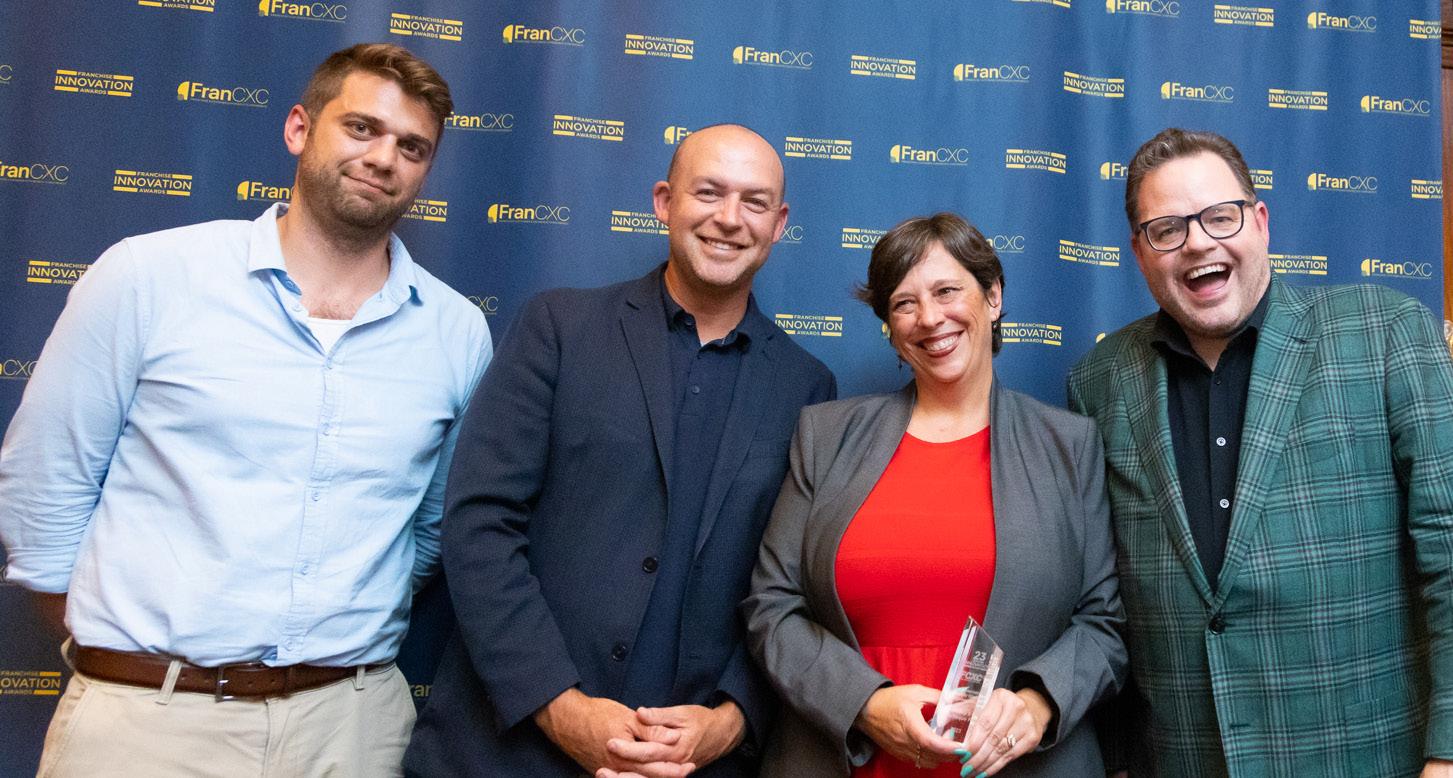
OBJECTIVE: Proactively fill open appointments with customers most likely to book, based on open appointment characteristics.
OVERVIEW: In 2022, MassageLuXe rolled out a new feature within the brand’s custom POS software that proactively notifies clients and members of open appointments twice per week using its CRM system. Through these notifications, clients can easily select an open time slot and book the opening online themselves. In addition, the software allows spa owners to click on an open appointment and select a feature to find customers. The technology pulls a list of clients most likely to book with the specific therapist at the specific time of day the opening is. Spa employees can then easily reach out by email, text, or phone to notify the client of the opening with their therapist of choice during the day of the week and time they typically come into the spa.
RESULTS: More than 50% of open appointments are booked each week directly as a result of this CRM feature. The emails sent as part of this work have more than a 45% open rate.
From new builds to equipment upgrades, we streamline the process so that you can focus on what you do best – running a business.
Franchise Capital Solutions is a nationwide financial solutions provider dedicated to the franchise industry providing a wealth of financial choices for entrepreneurs at every stage of their development.
FLEXIBILITY – We’re not locked in to specific industries or lenders. That means we can connect you with lenders that understand your brand’s business model and offer a loan structure tailored for your success.

CONVENIENCE – We understand the time required to build a business. That’s why we find the right lenders and bring them to you, saving you valuable time and money.

EXPERT GUIDANCE – We know the process so that you don’t have to. Whatever your project, we have the knowledge and experience to help you get it done.
ONGOING SUPPORT – We don’t stop working for you once your business is built. We’re here to help with all your financing needs as you grow.
HAND & STONE MASSAGE AND FACIAL SPA
OBJECTIVE: To continue providing customers with innovative luxury treatments at affordable prices while remaining competitive throughout the spa and wellness industry by adding new, noninvasive skincare treatments.
OVERVIEW: Hand & Stone is committed to enhancing guests’ lives through affordable, luxurious, and innovative services and treatments. Most recently, this is exemplified by its partnership with Dermalogica. Hand & Stone worked with Dermalogica to expand its menu offerings to include its newly developed skincare treatments—LuminFusion and NanoInfusion—using the Pro Pen, a nano- and micro-needling tool that offers different levels of penetration and precision. The NanoInfusion treatment delivers advanced professional results for skin texture and signs of aging. LuminFusion uses the NanoInfusion technology to deeply infuse active ingredients, and is combined with a targeted retinol peel to resurface and renew. LED red light therapy visibly restores skin luminosity with no downtime. All skin therapists who perform these services are Dermalogica-trained experts licensed in accordance with state regulations.
RESULTS : The Dermalogica Pro Pen and LuminFusion and NanoInfusion treatments are already well on their way to becoming one of the brand’s most successful offerings, with nearly 50% of locations adopting the technology since November 2022. And the two new treatments are quickly nearing $1 million in sales since their debut.
OBJECTIVE: BrightStar Care partnered with Avalere Health to conduct an analysis of its client outcomes and cost benefits. Avalere compared BrightStar clients to a matched control group of Medicare beneficiaries and assessed the relative usage of Medicare services between the two populations for different healthcare conditions. The average age of the population was 80.
OVERVIEW: BrightStar partnered with Avalere to analyze its clinical outcomes and cost benefits for clients diagnosed with certain chronic conditions.
RESULTS: Avalere’s analysis revealed that the change (baseline vs. follow-up) in the total cost of care was up to $29,902 less for patients who received BrightStar services compared with a control group of Medicare beneficiaries across numerous healthcare conditions. Individuals who received homecare services from BrightStar experienced lower rates of hospitalizations, emergency department visits, and skilled nursing facility usage across 30 different healthcare conditions, delivering lower costs for payers.

OBJECTIVE: Our objective was to become the first nationwide senior placement service to achieve systemwide certification for dementia care. We wanted to ensure that our franchisees had the knowledge and expertise to provide top-quality care for seniors with dementia.
OVERVIEW: All 140 of our Assisted Living Locators franchisees completed comprehensive training and became certified in dementia care. This systemwide certification ensures that our franchisees have the skills and knowledge to provide compassionate and effective care for seniors with dementia. We also provide ongoing support and education to our franchisees to ensure that they remain up to date on the latest advancements and best practices in dementia care.
RESULTS: Our commitment to providing high-quality dementia care has resulted in improved outcomes for seniors with dementia and their families. We have received positive feedback from our clients and their families, who appreciate the level of expertise and care provided by our franchisees. Assisted Living Locators is the first and only senior placement and referral franchisor to achieve systemwide certification for dementia care, setting us apart as a leader in the senior care industry.
FLEXIBLE BILLING
O N -
APPROVAL DASHBOARD CUSTOM PLATFORM
SITECUSTOMERSERVIC E
We’re a safe bet for brand protection with our one-stop marketing shop.

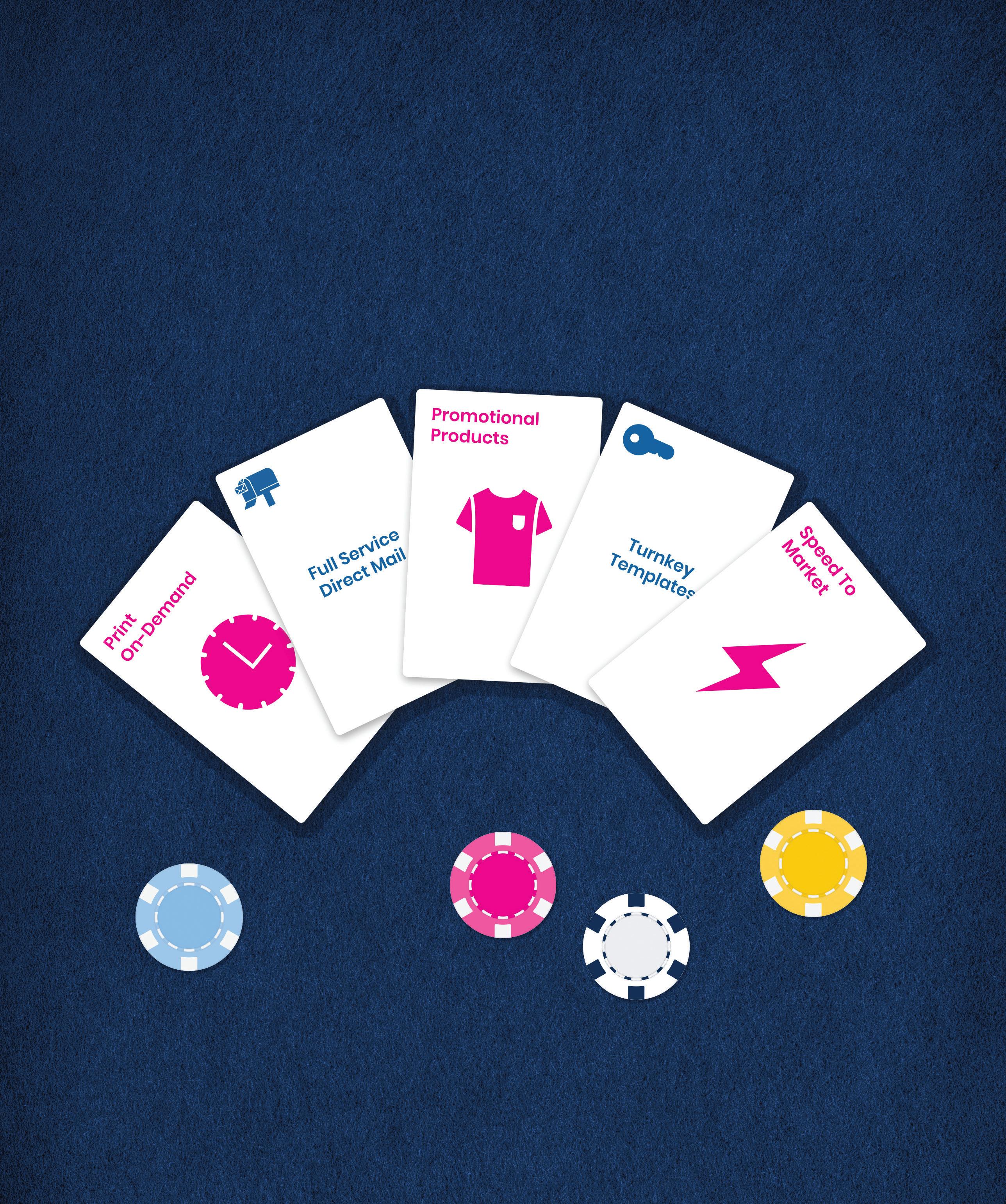

OBJECTIVE: The workforce shortage in home care is no secret. While hiring in the industry comes with its own unique challenges, our objective was to develop a program that would retain quality caregivers and drive revenue for our franchisees.
OVERVIEW: A crucial element to retention is getting a new candidate from interview to orientation to first shift as quickly as possible. We also implemented a program to incentivize and recognize employees. The goal of our retention program is to improve the length of stay of caregivers through employee engagement, recognition, and incentives.
RESULTS: Hiring exceeded the national average of applicants hired by 17% among homecare providers, and retention exceeded the national average by 21% among homecare providers. In addition, the company increased training hours by 100% above the national average among homecare providers. The program has allowed franchise owners to identify a new pool of potential caregivers and increased applicant inquiries by 32%.
OBJECTIVE: To ensure the successful onboarding and development of new franchise owners and their employees through virtual and in-field training experiences.
OVERVIEW: ManageMowed offers a comprehensive training program, which includes corporate and in-field training as well as up to three days of training in a franchisee’s new territory, supplemented by an extensive virtual library. Trainees learn everything from why and how our concept was created, why it works, and how to succeed through marketing, technology, management of vendors and clients, and office administration. The training includes at least 30 hours in the classroom and 28 hours in the field.
RESULTS: Our employee training program has yielded several strong team members. Many have advanced from the assistant account manager position to an account manager, or have transitioned from employees of the franchise brand’s Edmonds location to the franchise development corporate support team. Two local account managers in particular, Justin Harberg and Mitch Farley, both advanced in their roles within just one year of starting their careers with ManageMowed.
OBJECTIVE: Authority Brands’ “Life at” program was implemented to highlight some of the employment opportunities available at its franchises, while positioning its franchised brands as employers of choice and showcasing company culture through employeegenerated content.
OVERVIEW: The “Life at” social media channels are national social media pages on Facebook, Instagram, TikTok, and Twitter that highlight company culture through employee-generated content from franchisees. Implemented in April 2022 for The Cleaning Authority, in the fall for Woofie’s, and in March 2023 for America’s Swimming Pool Co., “Life at” let franchised brands connect with employees and operators to generate content that would help attract prospective franchisees to its various brands while simultaneously serving as a tool for owners to recruit employees.
RESULTS: The “Life at” initiative has had a positive impact on the overall culture at each of Authority Brands’ franchised brands that are currently participating in the program. It has fostered a sense of community and connection among employees, who are now more motivated to share their experiences with others. The positive feedback has also contributed to each brand’s image and reputation, making it a more desirable place to work for potential employees.
3 6 0 , 0 0 0 + F R A N
C O M P E T I N G T O B E . . .


L E A D G E N E R A T I O N
E x c l u s i v e l e a d g e n e r a t i o n s o u r c e s a v a i l a b l e o n l y t o t h e T o p 2 0 0 b r a n d s

M E D I A E X P O S U R E
P R a n d m e d i a o p p o r t u n i t i e s f o r a w a r d w i n n e r s
T H I R D P A R T Y V A L I D A T I O N
T r u s t e d i n d e p e n d e n t v e r i f i c a t i o n o f y o u r f r a n c h i s e e s a t i s f a c t i o n
I N D U S T R Y R E C O G N I T I O N
R e c o g n i z e d a s t h e g o l d s t a n d a r d f o r a c h i e v i n g b r a n d e x c e l l e n c e
D E A D L I N E T O E N T E R : S E P T E M B E R 3 0
 Written by KERRY PIPES
Written by KERRY PIPES
This marks the 5th year for Franchise Update Media’s Annual Franchise Innovation Awards competition. Judges critiqued more than 100 entries in four main categories and 22 subcategories to determine the winners. One of the highest honors each year is the Overall Award for Franchise Marketing Leadership. In a field crowded with worthy entries, Denny’s took home the award this year after winning in two individual categories—Best PR Campaign and Cause Marketing Champion—helping the restaurant chain get the nod as the overall marketing winner.
Denny’s Everyday Value Tee, which the brand calls the “first-ever wearable coupon,” helped create a buzz around its $5.99 menu and won the legacy brand the Best PR Campaign award. A limited run of 150 fashionably designed T-shirts, each featuring a unique QR code, was sold for $5.99. The lucky winners can enjoy Denny’s Everyday Value Slam every day for a year.
We asked Denny’s Director of Brand Engagement Vivian Velazquez to tell us more about the idea of the “wearable coupon” and its impact on the brand.
Briefly describe the innovation. We created a “coupon” by stitching a unique QR code into a T-shirt. We sold a limited supply of the shirts for only $5.99, giving each wearer a free Denny’s Everyday Value Slam for a whole year.
How did Denny’s use the “wearable coupon” to generate buzz, and as part of the brand’s overall marketing strategy? The T-shirt equates to a $2,186 value! Only 150 shirts were made available for sale on the most value-driven day of the year: Black Friday. The message was distributed primarily through Denny’s owned digital channels, specifically social media platforms, loyalty e-blasts, our main website, and our merch store (Diner Drip).
What were the original goals and objectives in creating the T-shirts? Competing for value in the market has become a “starting at” cluster of non-distinctive value menus aiming to drive short-term customer traffic. So how could we stand out? We looked for a way to get value-seeking consumers—who may not consider Denny’s their go-to value destination— to choose the $5.99 “Everyday Value Slam” as their best money-saving breakfast solution by creating a buzzworthy campaign. The answer was as simple as the oldest trick in the book: a coupon, but done in a way that had never been seen before: Introducing the first-ever wearable coupon. A simple, but very different idea.
HOW LONG DID IT TAKE TO PLAN, CREATE, AND LAUNCH? THREE MONTHS. What were the main results, impacts, successes, and ROI? The campaign saw us gain significant earned media. 1) Public relations:
360 placements plus a total of 150,447,792 media impressions (equal to 2½ weeks of paid TV media); some higher-profile stories appeared on Yahoo, CNN, Forbes, and Thrillist, among others. 2 ) Social media: a 293% increase in organic impressions compared with the month before the launch, as well as an 86% positive sentiment. 3) Web traffic: more than 350,000 total visitors to DinerDrip.com at midnight on Black Friday. The T-shirts sold out within 2 minutes.
What was the impact for customers? The publicity we generated pretty much crashed our site the night of launch, with more than 350,000 visitors hungry for their chance at the most delicious meal deal ever.
What was the impact for franchisees? It was very beneficial for franchisees. Visitors ready to redeem their coupon, as well as their family and friends hungry to try other meals with them, are building strong loyalty across the board—and are happily posting about it on their social media and sharing their stories.
DENNY’S MOBILE RELIEF DINER
The Denny’s Mobile Relief Diner was created to feed people in communities following natural disasters or other crises. The 53-foot tractor-trailer with full kitchen has traveled more than 50,000 miles and served more than 100,000 meals to people affected by natural disasters like hurricanes Harvey, Ida,
and Ian; the wildfire in Paradise City, California; tornadoes in Nashville; and flooding in Kentucky.
We asked Denny’s Mobile Relief Diner Program Director Paul Spencer about the mobile diner, its impact on communities in crisis, and how it might evolve.
Briefly describe the innovation. The Denny’s Mobile Relief Diner (MRD) is a 53-foot “trailer of hope.” We prepare fresh hot meals for people in need from natural disasters. This trailer has a fully equipped kitchen with grills, ovens, a cooler, a coffee brewer, an industrial mixer, a dishwasher… you name it. And with the help of local Denny’s crew members and franchisees, it’s ready to serve thousands of meals to communities when disaster strikes. It provides victims with a break from the chaos and gives them the hope of better days to come.
Explain how Denny’s uses the MRD as a part of its overall marketing strategy. “We love to feed people” is our brand purpose. It’s what drives us to do what we do each and every day. The MRD is the embodiment of that purpose.
What were the goals and objectives in creating and launching the MRD? It started in 2017, when Hurricane Harvey devastated Houston. Most of our stores in the area were damaged and had to close. That sparked the question, “How can we help our guests in Houston get through this disaster?” And the idea for the MRD was born. In just 11 days, we built a temporary version of a mobile kitchen in a 53-foot tractor-trailer and immediately sent it to Houston. During the week we spent in Houston feeding thousands of people, another hurricane was brewing in the Atlantic and heading for South Florida and the Keys—Hurricane Irma. The impact there also was devastating, so we packed up and headed to Florida. The overwhelmingly positive responses we received from victims of these tragic storms led us to formalize our mission of hope and build the MRD you see today.
What’s unique about it? A few things come to mind. Everything is cooked and served immediately, just like in our restaurants. Nothing is premade and stored for distribution later. MRD meals are taken from the pages of our restaurant menu, serving Den -
ny’s meals like pancakes and sausage, hot Denny’s brand coffee, and our Super Bird sandwich. But we’re not there just to feed people. We’re there to bring a smile to their faces, interact with them, show them we care, and bring a bit of normalcy to a moment of chaos. As we say at Denny’s, we’re not only feeding bodies, we’re also feeding minds and souls. The MRD is a perfect example of our brand purpose. As I said, “We love to feed people.”
How long did it take to put together, launch, and tweak the MRD to perfection? It took about six months to design and build. As soon as it was ready, we took off for California to respond to the Carr wildfires. We ended up responding to three more disasters that year. Since we used what we learned from our first makeshift mobile kitchen, we knew exactly what would work and what wouldn’t. The current design has proven to be spot-on, and we continue to make minor tweaks to improve our response performance.
What have been some of the main results, impacts, and successes of the MRD? Since its launch in late 2017, the MRD has traveled more than 51,000 miles across the country and has served more than 102,000 meals to those in need. We have deployed to areas hit by tornadoes, tropical storms, hurricanes, floods, and wildfires.
What was the impact for customers? When we serve a community in need, we are always overcome with emotion from the generous responses we receive. In many cases, the people we serve are Denny’s customers. Frequently we hear, “We didn’t know you did this.” We believe these encounters help create a greater guest connection with the brand. We work hard at creating a memorable experience for those who visit the MRD.
What was the impact for franchisees? The impact on our franchisee community and restaurant crews has been overwhelming. When we deploy to a disaster area, we work closely with our franchisees and restaurant crews to staff the unit. Although many in the brand have heard about the MRD, brand members don’t really understand the significance of our mission until they work on it. I can say without hesitation that everyone who works on the MRD wants to do it again. The common theme I hear from team
CAUSE MARKETING CHAMPION
Denny’s
CAUSE MARKETING CHAMPION
Dogtopia (Canada)
BEST LOYALTY APP
Tropical Smoothie Cafe
BEST SOCIAL MEDIA
CAMPAIGN BUDGET
Budget Blinds/Home Franchise Concepts
members is that the brand is doing something truly extraordinary by giving back in times of great need. It’s a huge pride point for all our brand members.
What were the main results, impacts, successes, and ROI? This isn’t a typical investment where you can connect people served with increases in sales or traffic. We measure our success by the number of people we touch each year and by the responses we get from those we have helped. While in Cape Coral, Florida, for Hurricane Ian, a woman who came every day with her children expressed her sadness that it was our last day since now she would now miss having a hot breakfast for her children each morning. That’s what true success looks like—making a difference in people’s lives! Will there be further evolution of the MRD? Yes, we continue to evolve the MRD program. Our main priority has been, and will continue to be, disaster relief. But in calm weather times, we are constantly looking for opportunities to expand our reach to communities or groups who may be underserved and to charities dedicated to supporting individuals in need.
Franchise Update Media’s 5th Annual Franchise Innovation Awards has once again recognized the best of the best in franchise operations and technology innovation. This year, more than 100 entries in four main categories and 22 subcategories were judged to determine the winners. One of the highest honors of the contest is the Overall Award for Franchise Operations & Technology Leadership.
This year’s winner is Dickey’s Barbecue Pit for building its own USDA-inspected production facility and state-of-the-art manufacturing and distribution plant. Dickey’s also was recognized with the award for Most Innovative Supply Chain Improvements.
Dickey’s needed a solution for supply chain disruption and food cost inflation—one that would provide continuous, high-quality barbecue meats at a competitive price. The goal was to control the costs of goods for Dickey’s franchisees and provide proprietary barbecue meats for the brand. The solution was to build its own production facility, the Wycliff Douglas Provisions plant, in Mesquite, Texas, just east of the company’s Dallas headquarters.
Since opening last year, the plant has produced and distributed thousands of pounds of craft sausages, wings, and chicken to franchisees and created hundreds of job opportunities for local workers. To date, the plant has developed a list of more than 50 clients and more than 1,000 grocery stores across the country, offering high-quality products, predictable availability, and a competitive price point.
We asked Renee Roozen, Dickey’s chief administrative officer, about the plant, its impact, and what the future might hold. Briefly describe Dickey’s innovation of its own manufacturing and distribution plant. Dickey’s stores were experiencing stress at every point in the supply chain, specifically around our seven core proteins, which
was leading to suppressed profit potential for our owner-operators. We started by asking, “How could we accomplish our objectives?” We quickly followed up with, “Should we accomplish them?” We put in the time to map out everything and to set the plans and objectives. We discussed the costs, timeline, ROI, and profitability needs. We then gathered the right team. In addition to five existing executives, we hired a sixth to ensure we had all avenues of the business needs covered. Then we went to work. We bought existing equipment whenever possible and rebuilt it ourselves to manage the pennies wherever possible and to provide the customization options we desired. We worked with a Swiss company to install an “Ion” system in the smokehouses.
What were the goals and objectives of building your own manufacturing and distribution plant? We knew we needed to have consistency in product, quality control of the product, and a dependable source for our proprietary product. We also wanted the ability to create additional revenue streams.
What was unique about this innovation? We are the only company in the lower 48 to use the Ion smoking system. It uses electricity to charge the smoke coming into the house so that it sticks to the product, reducing smoke time by 45%. This process also reduces emissions as the smoke particles remain inside of the house to be rinsed away instead of being put into the air. The Ion system interfaces with a touch screen control system that manages the smokehouses, collects and maintains all required USDA data, and ties into a remote server for continuous backup and remote monitoring.
How long did it take to plan, build, and launch the facility? We spent 12 months to source equipment, identify a location, and build out the location in Mesquite, Texas. We chose Mesquite because it is a central transportation location. We identified an available convertible warehouse space with
existing loading docks. We then took an additional 3 months to make it operational.
What was the impact for franchisees? It decreased costs by 16% for chicken and 12% for sausage. It also provided consistent availability of our proprietary product at a good value.
What was the impact for customers? They get consistent quality and better value and the convenience of having our products available in more retailers.
What kind of ROI has Dickey’s experienced? We’ve added 12 new clients and 20 private label protein lines. We are very pleased with our investment in the plant.
Will there be further evolution of this innovation? Absolutely. We continue to get requests for new products using this new process. We meet weekly on what the next steps will be for Wycliff Douglas Provisions. We started with Dickey’s Barbecue Pit, and we continue to innovate and add to our capabilities. We are investing in new equipment to meet the needs of our customers.
OVERALL OPERATIONS & TECHNOLOGY LEADERSHIP
AWARD FINALISTS
MOST INNOVATIVE SUPPLY CHAIN IMPROVEMENTS
Dickey’s Barbecue Pit
MOST INNOVATIVE BUILDING DESIGN, REMODEL, OR PROTOTYPE
Kona Ice
MOST INNOVATIVE USE OF TECHNOLOGY
MassageLuXe
MOST INNOVATIVE USE OF DATA
BrightStar Care


 Written by KERRY PIPES, EDDY GOLDBERG, M. SCOTT MORRIS
Written by KERRY PIPES, EDDY GOLDBERG, M. SCOTT MORRIS
This year’s Franchise Customer Experience Conference (FCXC) was dominated by talk of technology—specifically artificial intelligence and its effects on everything from consumer marketing to franchisee benchmarking, recruitment, hiring, and much, much more.
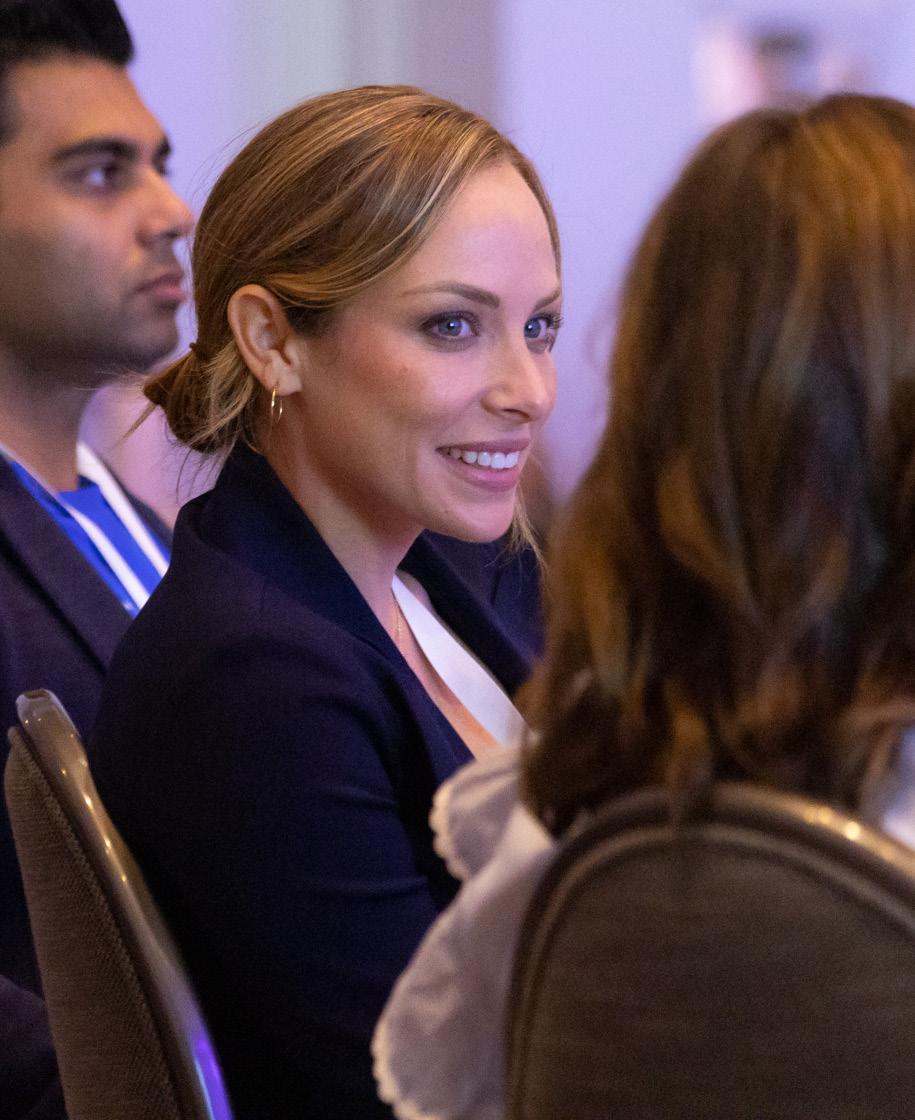

And while conversations about AI were found buzzing around every corner, the annual get-together this past June at Atlanta’s InterContinental Buckhead hotel also delivered the goods in areas critical to franchising success, such as operations, technology, branding, consumer marketing, and consumer experience.
This year’s FCXC featured a special CMO Summit and CEO Summit. The CMO Summit focused on three major themes: 1) the role of the CMO in driving change, 2) generating demand in an economic downturn, and 3) the art and science of marketing. The CEO Summit focused on how CEOs can keep up with the rapid pace of change to unlock customer-focused results. Fittingly, it kicked off with a quote from GE’s Jack Welch: “If the rate of change on the outside exceeds the rate of change on the inside, the end is near.” Discussion topics included how
to foster innovation and creativity; how to balance existing priorities with new technologies and which departments should own them; and franchisor-supplier relationships.
The ongoing partnership between Franchise Update Media and the IFA created a stellar educational and networking event. The conference also revealed findings from the Annual Franchise Marketing Report (AFMR), celebrated the winners of the 2023 Franchise Innovation Awards, and offered plenty of networking time for greetings, meetings, and deal-making.
Keynote speakers, general sessions, breakout sessions, and a sold-out Sponsor Networking Area all helped deliver a record-setting conference. Unleashed Brands was this year’s Platinum Sponsor.
AI and ChatGPT were everywhere, but perhaps nowhere more front and center than at Dan Monaghan’s session, “AI & Technology of the Future.” Monaghan is the co-founder of WSI, a digital marketing agency. He also founded Clear Summit Group (CSG), a private equity firm with a strategic focus on investing in high-growth, early-stage franchise and technology companies.
“AI has already become better at detecting cancer in patients than trained oncologists,” he said to a packed room. “Now, generative AI is helping us create all kinds of things, from video to graphics and beyond,” he said. “There are so many ways AI can streamline and automate franchising operations and help in strategic decision making.” In addition to chatbots that can become business coaches for franchisees, Monaghan said ChatGPT can:
• respond to a brand’s negative reviews online
• create job descriptions
• write a curriculum for professional development
• respond to RFPs
• summarize legal agreements
• compare and contrast FDDs
• do a SWOT analysis
• name products, campaigns, and even companies
• and could someday (soon?) handle franchisee support issues.
Elsewhere, in the “New Ideas for an Elevated Technology Program” session, Conway Briscoe, director of technology at DreamMaker Bath & Kitchen, delivered plenty of insights into how technology is not only changing the way brands do business, but how it also is changing brands themselves. “You probably have a franchise advisory council,” he said. “But do you have a franchise technology council? It’s one of the best ways to implement technology changes in your system more quickly, and with more buy-in from your franchisees.”
It also helps to break down silos and foster more interdepartmental communication. “We call it our technology task force,” said Ryan Aschauer, CIO at Floor Coverings International. “The brand and franchisees all work on implementing technology together.”


Briscoe noted that AI also can be used by brands to evaluate their sales team’s calls with prospects to see what they did right, what they missed, and what they could do better. And it even can be used to analyze the happiness level (sentiment) of people on a Zoom or video call.
Tim McIntyre, former EVP at Domino’s and founder of T/M Communications, provided a master class in his presentation, “Build Your Crisis Communication Plan.” When it comes to preventing and responding to negative events, he said, honesty, authenticity, and culture are key. “Be the person or brand you want people to think you are,” he advised.
Although the Exxon Valdez oil spill in Alaska happened almost 35 years ago ( March 1989), survey respondents still typically list the company among its top most-hated brands, McIntyre said. And remember the United Airlines PR fiasco after baggage handlers broke a Canadian musician’s $3,500 guitar 15 years ago? After 9 months of fruitless negotiation with the airline, the frustrated singer wrote a trio of songs (“United Breaks Guitars”)—all because no one was authorized to reimburse him for his damaged guitar, McIntyre said. “Do you know what it costs to care about somebody?” he challenged. “Not a damn thing.”
During a session called “Using AI & ChatGPT To Increase Marketing Copy,” panelists agreed that AI will replace some marketing jobs, but it isn’t able to do storytelling yet (among other things). “It’s going to change the skills we hire for,” said Lindsay Simpson, CMO at Athletic Republic.
Marketers currently are knee-deep in the explore-and-experiment phase of ChatGPT, which can help with outlines, summaries, blog posts, and email subject lines, for example. Eric Haberacker, director of digital and social media at Hand & Stone Massage and Facial Spa, advised marketing professionals to work with it, “to see what kinds of enhancements it provides.”
Even with all that ChatGPT offers, it has its limitations, said Jessica Fasanelli, digital marketing manager at Streamline Brands. Whatever it produces must be vetted and verified by humans. The Internet is filled with information, not all of it accurate. Far from it, in fact. “I usually don’t copy and paste everything it gives back,” Fasanelli said, “but it definitely gives me a start.”
The conference covered all the critical customer experience fundamentals in multiple sessions, including “Driving Franchisee Profits Through Customer Experience,” “Build Your Vision, Mission, & Strategy Statement,” and “Level Up Your FBC Support.” Conversations throughout these sessions included discussions of franchisee buy-in, franchisee experience, franchisee support, key customer metrics, benchmarking, brand culture, and how to best use today’s overabundance of data.
The Sponsor Networking Area opened several times to allow attendees one-onone access to vendors, suppliers, and peerto-peer networking, as well as some muchneeded refreshment.
Two keynote speakers addressed attendees over the course of the conference. Shawn Kanungo, an innovation and disruption strategist, brought a number of thought-provoking ideas to the stage in a fast-moving presentation. Essentially, he provided a road map for dealing with the onslaught of technological disruption affecting both businesses and consumers, and gave attendees strategies for exploring how to think and act differently to ensure their brands remain competitive and relevant.
“The Internet used to be the most efficient copying machine in the world. Now, AI is the most efficient copying machine in the world,” he proclaimed. “Innovation is permissionless,” he added, in reference to taking chances and thinking creatively. And finally, “The enemy of innovation is red tape.”

Digital marketing/social media guru and brand loyalty and customer service expert Jay Baer brought a practical, problem-solving approach to his “Customer Experience Roundtable Challenge” keynote presentation. Speed of delivery and setting appropriate customer expectations were focal points of his talk.
“Two-thirds of customers say speed is as important as price,” he said. “Give customers time, and they will give you money.” One of the biggest takeaways from Baer’s talk: “Some customers will pay more to get something faster, so offer them a ‘fast-pass’ option.” As an example, he told of how he arrived at a hotel before check-in time, but for $30 he could buy a “fast pass” to get into his room
earlier. He paid. Clearly he was not alone, adding that this practice provided the hotel with almost $2 million in additional annual revenue. This idea generated a lot of nodding heads and note-taking among attendees.
He also emphasized the importance of closing the “uncertainty gap”—the difference between your operations and your customers’ expectations. “You don’t always have to be the fastest as long as your customers know what to expect,” he said. Baer concluded his keynote with a spirited competition between tables to design a campaign for a fictional custom closets franchise with these two themes in mind. It was a lively way to close the day, with prizes for the winning table.
The 2023 FCXC was filled with plenty more great content. Franchise Update Media’s EVP & Chief Content Officer Diane Phibbs presented highlights from the 2023 Annual Franchise Marketing Report (AFMR), the company’s proprietary and extensive survey that this year measured the marketing practices and strategies of 65 franchise brands. Read more about the report’s findings elsewhere in this issue.
Matt Layman, the IFA’s SVP for Government Relations & Public Affairs, provided an update on what the association is doing on behalf of franchising at the local, state, and federal levels. He noted that franchising is growing, with the number of establishments increasing 2% YOY, and employment in franchising predicted to reach 8.2 million. Franchising’s total economic output in 2023 is predicted to top $860 billion. Layman said the IFA is launching its Facilitative Ombuds-
man Program, which offers franchisees and franchisors the services of a confidential and neutral third party to de-escalate disputes.
FRANdata CEO Darrell Johnson delivered his annual report on the economy— where it is, where it’s headed, and its likely effects on franchising in 2023 and 2024. “If there is a recession, it looks like a soft landing,” he said. Johnson said a key area to keep an eye on is rising household debt levels and their effect on discretionary spending.

“Marketing success will involve looking beyond the aggregate and will be more of a battle for market share,” he said. Competition for consumer dollars is not only about share of wallet, but about how much is left in those wallets after the pandemic. “Consumers’ ability to spend is being constrained to a greater extent than any time since the Great Financial Crisis,” he added. For more on these ideas, see his “Market Trends” column elsewhere in this issue.
Innovation was hot again this year as the finalists for the coveted Marketing & Branding and Operations & Technology Innovator of the Year awards presented the goals, strategies, tactics, and results of their entries. Four finalists in each of these two categories competed for the two top overall awards. There’s more about each of this year’s 22 winners in these pages.
Plan now for next year’s FCXC, June 18–20, 2024, at the InterContinental Buckhead in Atlanta. You can find all you need to know on franchising.com.

190 Franchisors
60 Sponsors
27
The 5th Annual Franchise Innovation Awards included more than 100 entrants in four main categories and 22 subcategories. The best-of-the-best innovators, game changers, and disruptors competed in four categories: Marketing & Branding, Operations & Technology, Products & Services, and Human Resources. A panel of judges evaluated each entry based on a brand’s stated objective, the problem or improvement targeted, and the metrics they provided about the results. Here are this year’s winners:
Marketing & Branding (8)
Best Big Budget Campaign
Best Digital Campaign
Best Limited Budget Campaign (under $1 million)
Best Loyalty App
Best PR Campaign
Best Social Media Campaign
Cause Marketing Champion
Kumon North America
Dogtopia (Canada)
RNR Tire Express
Tropical Smoothie Cafe
Denny’s
Budget Blinds/
Home Franchise Concepts
Denny’s
Local Marketing Leadership Cicis Pizza
Operations & Technology (6)
Most Innovative Building Design, Remodel, or Prototype
Kona Ice
Most Innovative Franchisee Support Wireless Zone
Most Innovative Operations Team Re-Bath
Most Innovative Supply Chain Improvements
Most Innovative Use of Data
Dickey’s Barbecue Pit
Camp Bow Wow
Most Innovative Use of Technology MassageLuXe
Products & Services (5)
Most Innovative Product Introduction
Most Innovative Service Introduction
Most Innovative Use of CustomerFacing Digital Tools
Most Innovative Use of Data
Most Innovative Use of Technology: Products
Human Resources (3)
Most Innovative Employee Recruiting
Most Innovative Employee Retention
Hand & Stone Massage and Facial Spa
Assisted Living Locators
Twin Peaks
BrightStar Care
Cruise Planners
America’s Swimming Pool Co., The Cleaning Authority, & Woofie’s Pet Care
Homewatch CareGivers/Authority Brands
Most Innovative Employee Training ManageMowed
This past March, Mexican fusion brand Bubbakoo’s Burritos made a strategic addition to its executive team, hiring Mimi Somerman as its first CMO. She came prepared for the job, with more than two decades in the restaurant industry that included stints at QSR, fast casual, casual, and fine dining brands.


“I knew immediately that Bubbakoo’s was a concept strategically designed to not only scale, but thrive at a national level,” she says. “When they approached me about joining their team, it was an easy choice.”
Somerman’s addition comes as the New Jersey-based brand celebrates 15 years in business, topping 100 locations in 16 states. The brand, which is building a reputation based on its innovative menu, this year jumped 100 spots to #238 on Entrepreneur’s Franchise 500 list.
Her experience covered the bases of what she calls “comprehensive marketing, communication, and brand strategy” for Bubbakoo’s as the brand prepared and launched an updated and modernized app and loyalty program designed to engage guests and elevate their experiences. A number of unique promotions and prizes began rolling out in June.
“My primary goals as the CMO are to drive brand awareness and sales within and outside of our already popular markets and insert Bubbakoo’s into larger restaurant industry conversations,” she says.
Somerman says one of her fundamentals of marketing revolves around a consumer-centric approach that prioritizes the wants, needs, and insights of customers. “Nothing will ever be as important as knowing your customers,” she says.
Describe your role as CMO. I lead the comprehensive marketing, communication, and brand strategy for our brand and provide individualized support for our franchise owners based on their needs.
What’s the most challenging part of being a CMO today? Today’s climate comes with both advantages and challenges, and those can often overlap in marketing. One of the ways it overlaps is with the quantity and velocity of innovation and thought leadership. While it’s an advantage to see what’s worked for other brands, it can limit the amount of originality we can infuse into our strategies. This, however, simply requires us to constantly keep innovation top of mind in our day-to-day operations.
How has Covid-19 affected the way you have led your brand’s marketing efforts? While Covid-19 now is no longer an emergency, its effects can still be seen in all facets of business today. In terms of my role as a CMO, we now know that despite there being no mask mandates or restrictions in place, consumers still have a major focus on things like off-premise dining, third-party delivery, and mobile rewards programs. These aspects were heightened during the pandemic and continue to be paramount in our strategies to this day.
What are the three most important keys to being an effective CMO leader today? There are three tenets I keep top of mind in terms of being an effective CMO leader. The first, and arguably one of the most important, is to keep a consumer-centric approach to prioritize customers’ wants, needs, and insights. The next element, which has grown in importance in recent years, is em-
bracing the digital wave. There’s been such an emphasis on digital innovation with loyalty programs and apps that it’s become pivotal in our everyday operations. Third, adaptability is crucial in the ever-changing restaurant industry. We’re constantly coming up with new ways to better serve both our franchisees and our customers. Often, that means being fluid and flexible with our ideas.
How do you prepare a marketing plan and execute the strategies? I start by identifying clear marketing objectives and
Mimi Somerman
“Nothing will ever be as important as knowing your customers”








ensuring they align directly with our business goals from both a consumer and franchise development stance. This is followed by any necessary market research, which allows us to leverage gained insights to inform our next move. Using our goals, along with market research and target demographic information, we’re able to execute a strategy that includes any branding, audience segmentation, channels for promotion, and more.
How do you measure marketing results and effectiveness? For a restaurant concept, it can depend on what the specific marketing strategy was. The overarching goal is to drive both repeat traffic and new guests to our restaurants or app and increase transactions. To measure how effective our recent strategies have been, we typically track things like app usage, app downloads, numbers regarding our loyalty program, visits to our website, social media platforms, and so on. Discuss your core consumer marketing strategies and objectives. As a brand, we utilize several strategies to further our reach. One of those is with public relations from both a brand and local-ownership standpoint. Not only does this create buzz about noteworthy brand news, it also inserts our restaurant owners into local news outlets in their markets. We also highly encourage all store owners to be active in their communities to build relationships with everyday guests. How do you go about creating a customer-centric marketing and brand philosophy? It involves deeply understanding the needs, preferences, and pain points of your target demographic. It requires conducting market research, analyzing customer data, and leveraging customer feedback to inform decision-
making processes. Ultimately, this shapes marketing strategies that prioritize delivering personalized experiences and building strong customer relationships.
Why is it so important for the marketing department to have a personal touch when it comes to helping the brand connect with franchise prospects? We have a lean marketing team that is personally involved in all aspects of marketing. It’s imperative that our marketing team adds a personal touch to everything we do, especially when aiming to support potential franchise prospects through the pipeline. We’re also in constant communication with our existing franchisees. Ensuring that they feel our dedication at the same time is paramount in our work.
How does this help your franchise sales and development effort? Our franchise owners know that they’re important to us and feel valued in our system. That’s imperative to us because we are currently more regionally based. We want our current and potential franchise partners to feel connected, supported, and cared for. Our marketing efforts and communication with store owners can play a major role in that.
What ways/tools do you rely on to do this? We rely on this connectivity with an extensive welcome program for our franchisees. It’s where they have the opportunity to meet the team and learn in-depth about how we operate on the ground level. Overall, it makes them feel more secure in their choice to move forward with us.
Do today’s prospects expect more from the franchise marketing department? What, and how do you provide it? Yes, I do think franchise prospects today expect
more out of a marketing department largely because the landscape we live in has shifted so dramatically to a digital, consumer focus. We provide all of our franchisees annual, quarterly, and even monthly plans and reports that outline the work we do and how it benefits their locations.
How is today’s consumer and marketing data helping you fine-tune your marketing initiatives? Well, there’s a lot more of it out there than ever before, so we’re able to use the data to analyze what campaigns are working with our target demographics and fine-tune our strategies to fit what the data shows us.
How do you work with other internal departments, and does technology help? We work with other internal departments on a close basis to ensure that each facet of our business is running as smoothly as possible. Our marketing strategies wouldn’t come to life without the creative and technology side of the business. Our franchise operations team relies on us to support our franchisees from a systemwide and local market standpoint. It’s a symbiotic relationship between departments.
Do you see vendors as business partners? Absolutely. Our vendors act as an extension of our team. Each vendor we do business with takes the time to learn our brand and become integrated at a deep level with our day-to-day operations. Their partnership is integral to our success, and we make sure they feel valued.
How have marketing strategies/tools changed over the past decade? How have you adapted? Marketing is an ever-evolving field, but the past 10 years have been particularly fast-paced. Data-driven, digital, and hyper-personalized marketing is what consumers look for, and that’s something we’ve been able to adapt to when using our social media channels, mobile app, and other resources.
What advice would you offer to aspiring CMO executives? The technology may change, and the tactics and strategies may change, but the bottom line is that consumers like to feel seen and heard. If you’re able to provide that for them, you’ll gain loyal and lifelong fans.
“a
"We found Transitiv to be the strongest partner in achieving our goals. To both visualize & centralize data, it's a solution beyond compare."
-Conway Briscoe DreamMaker Bath & KitchenOn average, customers have seen an 88% increase in leads, and a 29% increase in "services booked" within their first year with Transitiv.
+88.5% in Leads +29% in Services Booked
Aggregating accurate data is inherently difficult in a franchise network. This is due to fragmentation, and ever-changing technology, which leads to difficult governance, and siloed decisionmaking. Without clear, and accurate data, franchises are left wondering what is truly driving success, and how their franchisees stack up in comparison of major KPIs.
Transitiv helps franchises organize, maintain, and activate data across their organization. Transitiv has a full suite of products to serve franchises, regardless of where they are on their data journey.


1 2 3
Onboard your networks data and understand the usability and quality of your business data infrastructure, and what adjustments should be made to ensure your data is compatible with FIT™ and other BI & AI tools.
Take ownership of your data. Connect all of your data into a data warehouse built and maintained by Transitiv fulfilling your data needs across the entire organization.

Visualize and compare franchise performance across the network. Gain actionable insights based on your data, enabling smart decision-making, and improved performance across the franchise.
In today’s competitive business landscape, crises are an inevitable occurrence that can catch us off guard. However, by adopting a proactive approach rooted in ethical and responsible conduct, effective PR crisis management can be achieved. By placing a strong emphasis on ethical behavior, organizations can cultivate trust and resilience, establishing a solid groundwork to effectively tackle any unexpected challenges that may emerge.
At Window World, we exemplify this philosophy by upholding strong ethical practices and maintaining an upright reputation, minimizing the likelihood of requiring an elaborate crisis management strategy. Along with the expertise of an external public relations firm, the following multifaceted approach maximizes our ability to protect our brand, support our franchisees, and build trust with customers.
BOB SCHINDLER Vice President of Marketing Window World
Vice President of Marketing Window World
Business ethics. Proactively prioritize ethical conduct and responsibility within your organization. By making ethical behavior a cornerstone of our business operations, we minimize the likelihood of crises and establish a solid foundation for effective crisis management if the need arises.
Preparedness. Working hand-in-hand with our PR partner, we conduct regular risk assessments and develop contingency plans. Their guidance and insights enable us to anticipate potential crises and develop comprehensive response strategies.
Rapid response. Time is of the essence. Making a quick and confident announcement to the media and your franchise ownership network is key. By stepping up and sharing what you know quickly, you shut down the rumor mill. Our external PR firm also plays a pivotal role in coordinating our response efforts. With their assistance, we craft clear and consistent messaging that addresses concerns head-on.
Continuous evaluation and improvement. After a crisis, dive deep into analysis mode. Dissect your response, examining every move you made. It’s all about learning from the past and using those lessons to level up your future protocols. This ongoing evaluation and improvement process, especially when guided by a strong public relations partner, ensures that our strategies remain effective, adaptive, and aligned with industry best practices.
One final thought: By prioritizing ethical conduct and implementing these strategies, organizations can establish themselves as leaders in crisis management, fostering resilience and trust in an ever-evolving business environment. While having a solid crisis communication plan is essential, let’s all aim for something even better—rarely needing to use it! At Window World, we’re all about implementing a stellar code of conduct across our franchise organization to keep potential crises at bay.
What

At ServiceMaster Brands, we have seven brands in our portfolio. While the businesses are unique, the way we handle a crisis is the same. Whether you work for an organization with an elevated risk of a crisis or a smaller business where that risk is minimal, creating a strategy for difficult situations is crucial.
When I started my career in communications, the first advice I received was this: “Tell it all, tell it fast, and tell the truth.” After more than 20 years in this line of work, it is still the mantra I follow. In a crisis, the communications job is to be that trusted resource. Being able to assume that responsibility starts by having a well-developed plan.
When building a crisis communication plan, it is important to run through a wide variety of potential crisis scenarios and determine how to best handle each. Our response to a vehicle accident at Two Men and a Truck will involve a different approach than a situation where a team member at ServiceMaster Clean has a health emergency during a job. Requiring varying levels of crisis response and preparing for a wide scope help determine what resources may be needed and what success looks like following the crisis.
Once a business has a crisis communication plan in place, it should be “exercised” regularly. Share the plan with people who have experience in managing crisis communication and make revisions. One of the best ways to practice crisis communication is by
watching how crises are handled by other brands. Learn from how similar businesses communicate during a crisis and apply successful practices to your own plans. All of this preparation helps when a crisis arises.
Despite how well formulated your strategy is, anticipate that something will not go according to plan. It is futile to attempt to account for every possible situation; there are many external factors that are nearly impossible to prepare for. Think of it as having your road map and knowing where you are headed but accepting there may be unexpected detours along the way. When these detours arise, keep focused on where you are going. This mentality can be challenging in a crisis because high stress levels and emotions are involved. But remember, you wrote your crisis communication plan with a sound mind, and you can trust it. Avoid the urge to react out of emotion. Just stay the course.
One of the biggest mistakes a business can make is not having a plan or having a plan but letting it sit dormant until a crisis occurs. Crisis communication is important but not urgent until a crisis happens. Then it becomes urgent, and then it can be too late.
(ServiceMaster’s seven brands are ServiceMaster Restore, ServiceMaster Recovery Management, ServiceMaster Clean, Merry Maids, Two Men and a Truck, Aftermath, and Indoor Science.)
Tell it all, tell it fast, and tell the truth. After more than 20 years in this line of work, it is still the mantra I follow. In a crisis, the communications job is to be that trusted resource.
 Written by JACK MONSON
Written by JACK MONSON
Storytelling is the essential part of human communication. From ancient cave paintings to TikTok videos, great stories have always captivated us, evoked emotions, and conveyed powerful messages.
As a brand, great stories make you rise above your competitors. While many complain about the ever-changing social media algorithms and landscape, social media is where successful marketers win by telling stories.
But what sets apart a great story from a forgettable one? What are the key elements that make storytelling truly impactful? Let’s explore the vital components that contribute to the art of good brand storytelling.
At the heart of every compelling story is a memorable and relatable hero who draws your audience into your narrative. Characters should possess depth, have clear motivations, and undergo transformation at some point in the story.
Who is the hero in your brand’s story? It’s not you. And that’s the secret. Your stories must focus on your customers, not yourself or your business.
So many marketers working for franchise brands and nearly all agencies in this space
get this wrong. They think storytelling is all about sharing the history of the brand. However, your audience does not care about how you started your company, what you did before, or how many things you’ve sold. That’s lazy, uninspired storytelling. Your audience wants to know what you can do for them.
If you’re a franchisee, the hero of your story is a customer. If you’re a franchise industry supplier, the hero of your story is a franchisor. And if you’re a franchisor, the hero of your story is a franchisee. That’s the great thing about scaling a franchise business: more units, more stories.
So, what’s your role in the story? You’re here to help the hero. You’re in the story to provide guidance, a plan, or tools to be successful.
If your brand is Star Wars, you’re not Luke Skywalker. You’re Obi-Wan Kenobi. If your brand is Camelot, you’re not King Arthur. You’re Merlin. If your brand is The Godfather, you’re not Don Corleone. You’re the consigliere.
Your voice as the storyteller should be empathetic. The story is not about what you want, but what your hero and your audience want. Your voice should also be authoritative to lend credibility and add depth to the storytelling experience.
Conflict is the driving force behind any story. A well-crafted conflict moves the narrative forward and keeps the audience engaged, wondering how it will be resolved. It will force your hero to grow, adapt, and overcome. The conflict is where you hook the audience. This is where your audience puts themselves into the story.
If you know your audience, creating an interesting conflict should be the easiest part of writing your story. What problem does your audience have? Without this problem, the audience won’t want to hear or read the story —and they won’t need you or your brand.
A captivating plot is the backbone of any story. Even if we’re talking about very short videos on Instagram, TikTok, or YouTube Shorts, it should have a well-defined structure with a clear beginning, middle, and end. The plot should present the conflict the hero must overcome, creating suspense. A good plot keeps the audience engaged and eager to learn what happens next.
With short-form videos and other short social media content, it’s more crucial than ever to boil a story down to its most important parts. That’s the key to storytelling in an age of decreasing attention spans and exponentially increasing noise on all social media platforms.
4) The impact and resolution
Stories that touch the audience’s emotions have a lasting impact. Emotionally resonant storytelling can make your customers laugh, cry, or, most importantly, feel inspired to take action. Whether it’s a heartfelt dialogue in a short video, a poignant moment in a podcast, or a persuasive image on Instagram, evoking genuine emotions can elevate your brand story.
The resolution should be satisfying and provide closure. The resolution should also lead to the audience wanting to replicate that story, focusing on themselves.
Jack Monson is the CEO of Brand Journalists and has been helping franchisors and franchisees with digital marketing for 15 years. He is also the owner and host of Social Geek, home of the top podcasts in franchising, including “The Franchise News Podcast” and “Social Geek Rock Stars.”


At most companies, policies and processes are put in place to deal with employees who exhibit sloppy, unprofessional, or irresponsible behavior. But if you avoid or move these people out, you don’t need so many rules. If you build an organization made up of high performers, you can eliminate most controls. The denser the talent, the greater the freedom you can offer. Do you want your leaders and employees to be more successful? Encourage them to fail more.
In his book, No Rules Rules, Netflix Cofounder Reed Hastings shares how in his first business, Pure Software, he found out the hard way about having too much structure and too many policies: “Policies and control processes became so foundational to our work that those who were great at coloring within the lines were promoted, while many creative mavericks felt stifled and went to work elsewhere.”
This was followed by a slowing of innovation over time. Though efficiency had increased, creativity had dropped. Hastings points out that, as industries shift, most firms fail to adapt. He further reflects on the tendencies of those in leadership positions: “To survive, we needed to change. But we had selected and conditioned our employees to follow process, not to think freshly or shift fast.” What they needed was less transactional leadership and more transformational leadership behavior.
“With my next company, Netflix, I hoped to promote flexibility, employee freedom, and innovation, instead of error prevention and rule adherence. At the same time, I understood that as a company grows, if you
don’t manage it with policies or control processes, the organization is likely to descend into chaos,” he said. “If you give employees more freedom instead of developing processes to prevent them from exercising their own judgment, they will make better decisions, and it’s easier to hold them accountable.”
Successful leaders know that the most successful teams evolve when each employee is encouraged to have a strong sense of ownership for their role. That ownership runs parallel with a sense of commitment to the entire organization.
Businesses have to stop treating their employees like children. Effective leadership is about helping people reach their potential in performance, not managing them away from breaking policy or screwing up. Superior employee experience is a critical factor for current employees and job seekers alike. When leaders get this right, it forms the bedrock for best-in-class customer experiences. High performers need innovation, innovators need autonomy, and everyone needs intellectual stimulation.
Don’t let one poor employee ruin your organization’s freedom and flexibility. Process kills organizational flexibility. Fear kills creativity and innovation. Employee freedom means they can take a lot of risks and sometimes fail. Risk-taking breeds innovation. Take a good look at your current leadership style and consider adopting the mindset of failure-tolerant leaders.
My advice: Don’t punish 98% of your team members because you are afraid of what 2% might do.
“One of my jobs [as the leader of Amazon] is to encourage people to be bold. It’s incredibly hard. Experiments are, by their very nature, prone to failure,” said Jeff Bezos, Amazon’s founder and role model to many effective leaders. He shared his thoughts on the value of failure in an interview with Business Insider some years back.
While much has been made over the years about his business failures, Bezos says he’s made billions of dollars of failures at Amazon. “Literally billions of dollars of failures. You might remember Pets.com or Kosmo.com. It was like getting a root canal with no anesthesia. None of those things are fun. But they also don’t matter,” he said in the interview.
What does matter, he says, is to keep trying new ideas and learn from his failures. “Companies that don’t continue to experiment, companies that don’t embrace failure, they eventually get in a desperate position where the only thing they can do is a Hail Mary bet at the very end of their corporate existence. Whereas companies that are making bets all along, even big bets, but not bet-the-company bets, prevail,” said Bezos.
Reflecting on his own failures and successes at Amazon, Bezos said, “A few big successes compensate for dozens and dozens of things that didn’t work. Bold bets—Amazon Web Services, Kindle, Amazon Prime, our third-party seller business—all of those things are examples of bold bets that did work, and they pay for a lot of experiments.”
Effective change leaders factor in some failures on the road to their strategic goals. Be the type of leader who follows Tom Peters’ advice: “I would rather reward spectacular failures than mediocre accomplishments.”
John R. DiJulius III,author of The Customer Service Revolution, is president of The DiJulius Group, a customer service consulting firm that works with companies including Starbucks, Chickfil-A, Ritz-Carlton, Nestle, PwC, Lexus, and many more. Contact him at 216-839-1430 or info@thedijuliusgroup.com.
Martec supports franchise brands with unparalleled market intelligence and industry analysis. Across pet services, retail, automotive, education, restaurants/QSRs, hospitality, health, fitness, commercial services and many other industries, we help franchisors maximize opportunities through data and market research that deliver actionable insights and desired outcomes.



 Written by M. Scott Morris
Written by M. Scott Morris
Before a private equity firm decides to purchase a franchise brand, there’s a prolonged engagement period where both sides get to know each other and decide if their goals align. With hundreds of millions of dollars potentially at stake, it’s important to take the time to fully assess and evaluate the situation.
“We have a process,” says Aziz Hashim, founder and managing partner of NRD Capital, which has invested in franchise brands including Frisch’s Big Boy and Altitude Trampoline Parks, and in tech companies such as Qu and Harri. “It’s pretty involved because you have to understand what you’re buying. It’s not good form to buy something and then figure out you didn’t know what you were buying,” he says.
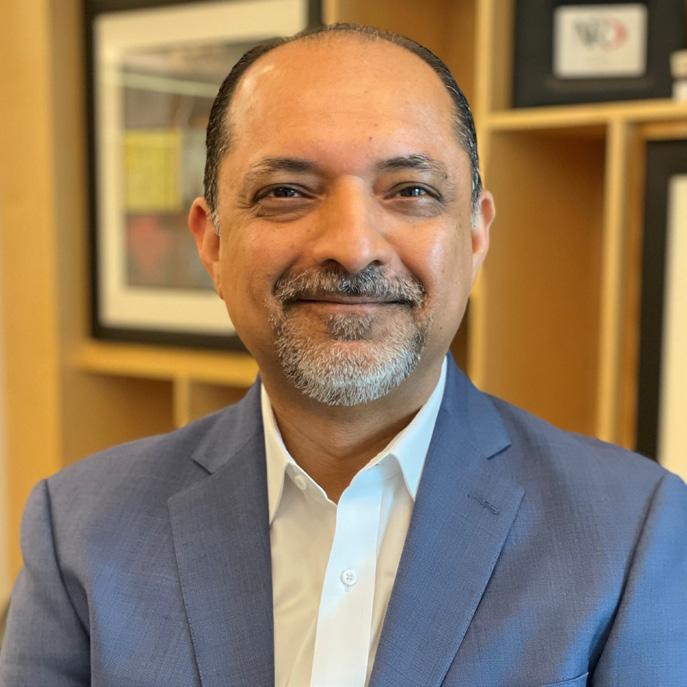
The due diligence phase preceding a deal involves finding out if the franchise’s executive team is 100% committed to dramatically growing the business over the next three to five years. PE firms are accountable to their investors, who expect returns. Part of what makes the franchise model attractive is its ability to grow in size and profitability relatively quickly.
However, for a PE firm evaluating a potential match with a franchisor, it isn’t all about the executive team at corporate. Before PE firms decide to pull the trigger on a deal, it’s crucial for them to also spend quality time with franchisees—just as a franchisee candidate would do when vetting a brand.
“If you’re buying a franchise system,” Hashim says, “it makes sense that the franchisees should be interviewed. They should
be asked if they’re happy. They should be asked if they’re making money. They should be asked if they plan to continue to grow within this franchise system. Those are natural questions to get to the bottom of to ensure that the franchisees are satisfied.”
It's a deal, now what?
If everything checks out and the parties come to an agreement, it’s time for everyone to buckle up and get to work. As strategic partners, PE firms provide direction, support, and capital that will affect how the franchisor’s management team handles dayto-day operations.
In the drive for growth, strong unit-level economics and profitability are key, says Josh Wall, chief growth officer at Unleashed Brands, which is owned by Seidler Equity Partners. “Each situation is going to be unique,” he says. “In many cases when PE is looking to make that strategic investment, it’s looking to help the management team install new processes and systems that can help serve the franchisees at a higher level. So those franchisees get greater support, become more streamlined, and more profitable.”

When partners at a private equity firm become interested in a franchisor brand or collection of brands, it’s because they see potential, says Chris Dull, CEO of Freddy’s Frozen Custard & Steakburgers. “PE came into the business because they had a strong belief in Freddy’s,” he says. “They came in to make it better.”
Dull has 15 years of experience working as a CEO for private equity. When Thompson Street Capital Partners was interested in buying Freddy’s, he was brought in as an advisor in the due diligence phase. “It turned out the founders were ready to step aside,” he says, “so I was brought in as CEO. That wasn’t the plan when I got involved.”
Changes at the top aren’t always about replacing executives. In many cases, the path forward involves adding new positions on staffs that had been stretched in the past, says Douglas Kennealey, a managing partner with Princeton Equity Group. The PE firm’s investments focus heavily on service brands, including Stretch Zone, Five Star Bath Solutions, and Massage Envy.
Michael Borreca Senior Vice President & CFO Empower Brandsnot a full C-suite. They might not have a CFO or a CMO. There’s usually a founder who is a CEO. More often than not, we are helping that original founder to build a bench.”
That’s been Michael Borreca’s experience. He’s a senior vice president and CFO of Empower Brands, which owns a variety of service brands, including Conserva Irrigation, Jan-Pro, and Wallaby Windows. In September 2021, Lynx Franchising acquired Outdoor Living Brands, creating Empower Brands, an umbrella company focused on the commercial and home services sector. Today Empower is a portfolio company of PE firm MidOcean Partners.
“As our business scales and becomes more complex,” Borreca says, “we have to bring in new talent—not just replacing, but actually
Aziz Hashim Founder & Managing Partner NRD Capital“It can be a shakeup, but it’s often about supplementing,” Kennealey says. “A lot of times when we make an investment, there’s
By building a more scalable platform for the future, we potentially attract more brands that want to join our family.”CHRIS DULL CEO Freddy's Frozen Custard & Steakburgers
creating new positions. We’ve invested in a new COO and a chief development officer who focuses on new franchise development. Those were new positions as we became more complex.”
The staff increases go deeper than the executive level. “Most of the investments have been at the next tier down,” Borreca says. “It’s about building out the support team and the support structure to scale. By building a more scalable platform for the future, we potentially attract more brands that want to join our family.”
has a 30-year CIO on their team. It’s free of charge for us to tap into that knowledge base. Absolutely, we should take advantage of that expertise.”
Unleashed Brands has locations in 15 different countries with its largest concentration of international locations in China. Wall says the team at Seidler has provided strategic advice that has powered the company’s international growth. “They’re excited to share their experience,” he says. “But more than that, they want to align you with subject matter experts. If it happens to be in their office, fantastic. If it happens to be with a current or former portfolio company, fantastic. They’re coming in as a strategic resource to help us hone our vision.”
Hashim’s company, NRD Capital, invests in mid-sized brands in the U.S. and around the world. “We often find that when looking at a company, especially in the area we look at, the lower middle market, they don’t have the type of resources in house to figure out what technologies to adopt,” he says. “So that’s part of the value proposition that we provide.”
Hashim has four decades of experience in the franchise business. He’s been a franchisee, a franchisor, a supplier, a consultant, and now is managing partner of a PE firm. He and his team share their vast experience with franchisors and franchisees alike. “We can help them sort through the options, like a cheat sheet or CliffsNotes,” he says. “If you need a good loyalty program, you can spend the next six months interviewing every loyalty provider in America, or you can talk to these two or three that we have decades of experience with.”
Kennealey says the same is true at Princeton Equity Group. The right technology can help franchisees automate their processes and increase profits. “If you do bathroom remodels like Five Star Bath Solutions,” he says, “you go out to somebody’s house, and you have a tablet and walk around and say, ‘Okay, here’s how much it’s going to cost to redo your bathroom, and I can show you some renderings,’ that can help that franchisee in their daily existence.”
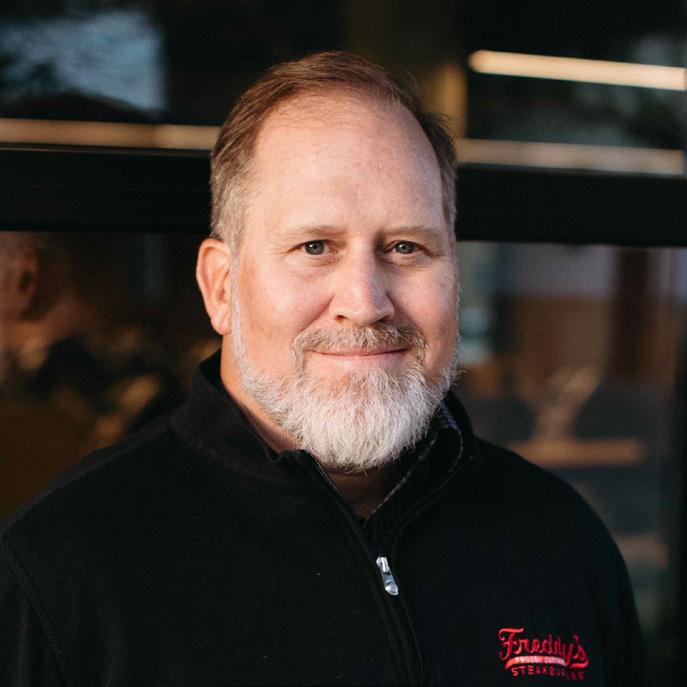
mier Martial Arts, Snapology, Urban Air Adventure Park, and its other brands.
“In every case, we look to streamline our tech stack,” he says. “For each of our brands, it is about upgrading their technology. That’s going to be around the POS to the customer. It’s going to be around how we’re communicating with our customers and team members. We were able to make each one of our brands more efficient by placing them all on our proprietary tech stack, which we call Command Center.”
At Freddy’s, PE investment isn’t only about the infusion of cash, Dull says. It’s also about using investments in ways specifically designed to help the company grow. Some of that money was invested in a menu study that examined Freddy’s pricing structure. The company doesn’t tell franchises how to price items, it presents suggestions. Before the study, there were 70 different options. That was refined down to 13. “With the study, we were able to streamline the business for our franchisees,” he says.
In addition, says Dull, the purchase by Thompson Street in 2021 provided capital to build a prototype of a smaller, more efficient restaurant that reflects lessons learned during Covid. Before the pandemic, Freddy’s was focused on dine-in customers. The new prototype was designed to improve service for drive-thru customers and third-party deliveries. “We built a corporate-owned prototype and invested a couple of million dollars,” Dull says. “We’re working through the inefficiencies. It wasn’t right for us to put that on the franchisees without trying it out first.”
Freddy’s also used capital from the acquisition to provide pictogram screens at its restaurants’ making and bagging stations to ensure both accuracy and speed. “Freddy’s is a made-to-order burger,” Dull says. “Most made-to-order burgers are not terribly fast, but at Freddy’s, we are quite fast. Our average order time is around fourand-a-half minutes.”
Resources at the ready PE firms generally stay out of day-to-day operations, but they will offer strategic advice as needed. If Empower Brands faces an IT challenge, Borreca says, “MidOcean
As the business rule says, “If you can’t measure it, you can’t manage it.” The franchisor needs the information, but so does the unit-level operator. Wall says that when Seidler purchased Unleashed Brands, the investment funded new technology for Pre-
Private equity investment in new technology is geared toward enhancing the customer experience, which has ripple effects throughout the entire system. If franchisees make more money, the franchisor makes more money, but it’s not a closed system. The business plan calls for growth in the form of new players willing to invest the blood, sweat, and tears
For each of our brands, it is about upgrading their technology that’s going to be around the POS to the customer.”
"


necessary to open their own franchises, and in existing franchisees adding new units.
According to Wall at Unleashed Brands, each franchisor brings its own strengths to the relationship with its ownership team. “Private equity is often looking for brands that connect really well with consumers, brands that have a lot of heart behind them, have a compelling value proposition to customers, and certainly have strong unit-level economics. That gives private equity confidence that the brands can grow and scale,” he says.
Freddy’s, for example, has approximately 500 franchisee locations. The brand’s current goal is to reach 800, and steps have already been taken to get there. “We have 150 units in the pipeline,” Dull says. “If we do nothing in the next 24 months, we’re going to have 150 openings.”
When private equity firms want to invest in a franchisor, or even in a large multi-unit franchisee, they look for teams ready to expand. So, in addition to providing capital, PE partners set goals for growth and targets to hit. That’s part of the fun, according to Borreca at Empower Brands. “It is a really
nice, balanced relationship when you find one of those growth-focused private equity firms that’s willing to invest capital and really wants to see a business they bought double in size in five years,” he says. “Let’s try to take what they’ve bought into and let’s double it. Where does it make sense to invest? Where does it make sense to grow and push?”
Franchising’s ability to expand relatively rapidly is one of the primary factors that attracts investors. Kennealey at Princeton Equity says the franchise business model is “highly scalable, meaning you can grow very quickly because it’s the franchisees who are all out there rowing in the same direction.” He says he admires the franchisees who invest in their businesses. “They’ve built their location, they’ve quit their job, and they’ve often signed a lease if it is a physical bricksand-mortar location,” he says. “They’re in it to win it, which is great. We, as the franchisor, are in it as well. We have success when they have success.”
Of course, not every franchise brand hits its growth targets, and not every investment pays off for PE firms. That’s to be expected, Hashim says. “No firm or individual or investor in the world can bat 1.000,” he says. “Could someone have predicted the pandemic? So how are you going to bat 1.000 when there are so many issues beyond your control?”
According to Hashim, some deals go according to plan, others don’t, and others do better than expected. “What’s important is having a solid investment thesis and pursuing that thesis to the best of your ability,” he says. “If something doesn’t work, there are others. It’s an act of diversification. We’re not just going to do one deal. In the end, it’s like buying a mutual fund.”
Eventually, it comes time for a private equity firm to sell its assets. “We’re an investment firm,” Hashim says. “We’re using other people’s money, our investors’ money, so you have to have a plan about how they’re going to get their money back.” During the engagement period when PE firms are doing their due diligence with the companies they’re looking to purchase, thought should be given to how an eventual marriage will end. “An investment fund has to have an eye toward an exit strategy,” Hashim says.
A sale is inevitable, but timelines can be flexible, Kennealey says. “It’s not ‘Our way or
the highway.’ It has to be right for the team. It has to be the right market conditions. The business has to be in a good spot. It has to be on solid footing. We have a lot of goals collectively with the management team that we want to achieve over several years. We need to look at where we are on the path toward achieving those goals. That will determine when there’s going to be an exit event of some kind.”
Because the exit is built into the relationship, the management team understands the end goal and takes steps along the way to make it happen. Borreca, who has gone through multiple private equity sales, says the exit strategy plays out in a step-bystep fashion.
“When the business is in a place that allows them to monetize their investment, we begin a process,” he says. “We involve third-party advisors and investment bankers to help us market ourselves to other, like-minded and growth-focused PE firms who are bigger. Hopefully, each time you go to market to sell, you’ve grown the business, so the equity checks get larger, and the types of investors have to get more sophisticated and larger.”
In the end, a private equity relationship is a finite thing. Ideally, the temporary partnership starts with capital investments and shared expertise and ends with the delivery of profits for investors, franchisors, and franchisees. And when one relationship ends, another begins. “You don’t slow down,” Borreca says. “We’re always growing and trying to look for the next best thing to bring to our franchisees.”
Douglas Kennealey Managing Partner
It is a really nice, balanced relationship when you find one of those growthfocused private equity firms that’s willing to invest capital and really wants to see a business they bought double in size in five years.”






What role should third parties play in franchise development?

Editor’s note: The cost-benefit of using franchise brokers and franchise sales organizations (FSOs) is a complex, sometimes controversial, issue and raises a number of critical questions for franchise development executives. This is the beginning of an ongoing effort to lay out strategies from the perspectives of franchisors, brokers, and FSOs. Look for more coverage in our monthly Franchise Leadership & Development Report newsletter and at the Franchise Leadership & Development Conference this October in Atlanta.
Franchise recruitment is expensive, time-consuming, and more competitive than ever as franchisors look to grow their footprints and boost profits with successful franchisees. It’s a complex path to growth that has franchise brands increasingly turning outward to a lead strategy that relies on brokers.
And for good reason. For franchise recruitment, brokers are the top paid lead source, according to FranConnect’s Franchise Sales Index Report, which notes that broker leads are more than five times more likely to result in a sale than all other paid sources.
While the advantages of using franchise brokers in development are plenty, franchisors must balance the benefit of generating those leads with the price of success. The cost for their services ranges wildly—from $1,000 to $100,000 annually, says Tom Wood, president and CEO of Floor Coverings International (FCI), of the costs associated with using franchise lead referral organizations. “Yes,” he adds, “we now pay a $100,000 fee to a broker network for a premium placement.”
Why use third parties?
Franchising’s continued rise comes even as economic factors—high inflation, labor and supply chain woes, legislative uncertainty, and geopolitical turmoil—are heightening the competition for high-quality franchise candidates. The overall number of franchise establishments is expected to increase by almost 15,000 to 805,000 units in 2023 in the U.S. alone, according to the IFA’s 2023 Franchising Economic Outlook report.
Lead and deal volume overall declined by 37% and 39%, respectively, in 2022 compared with 2021, according to FranConnect’s 2022 Sales Index. This “prospect supply chain shortage” will likely drive up the already high cost of lead acquisition, particularly for emerging brands that may be
giving up a healthy chunk of their one-time, nonrecurring franchise fees to brokers and franchise FSOs.
In the race to find and recruit qualified franchise partners, a valuable broker (aka consultant, advisor, matchmaker, or coach) can help provide the speed franchisors need to close on a promising lead with a prequalified prospect. “We like to say they are already on the 50-yard line when they come to us,” says Wood. “The time frame is cut nearly in half.”
FCI’s franchise development team works with more than 700 brokers to support their quest to rapidly expand the mobile showroom business model. “In our case, they introduce candidates to our brand who may have never thought about the flooring industry,” Wood says. “They also help filter out candidates who aren’t a good fit. And they have already introduced them to the benefits of franchising.”
A typical broker represents dozens, sometimes hundreds, of franchisors, serving as an intermediary between a qualified candidate and an associated franchise brand or, if in place, the franchisor’s outsourced franchise sales organization.
“We are like headhunters for the top-shelf franchisors,” says FranNet CEO Jania Bailey. “We are part of their marketing and are in the business of helping them find the best people for their franchise.”
This introduction doesn’t come cheap. Franchise broker commissions vary, but are typically 40% to 50% of the franchisor’s onetime, nonrecurring franchisee fee paid when a referred candidate signs a deal. Brokers earn even more when a deal leads to multiple agreements or territories.
The tab for recruiting new franchisees also extends beyond placement fees, which average nearly $30,000. Most brokers belong to a broker or lead referral network that connects franchisors and brokers and serves as an alternative lead source for the vetted franchise brands they represent. These groups also provide networking, training, resources, and marketing support to increase the exposure and reach of franchise opportunities. They may include brand sponsorship of conferences or other networking events.
Brokers may wear two hats—educating and advising franchise prospects about their options to find the right fit free of charge,
and identifying and vetting potential franchisees for franchisors—but they earn their bread from the franchise brands. Once the selling starts, they exit the scene and leave the heavy lifting to the franchisor.
PuroClean works with every broker group in some capacity to help “load balancing of the leads,” says Tim Courtney, the brand’s vice president of franchise development. PuroClean pays a $30,000 success fee for a broker-generated lead that turns into a deal, along with $1,200 to $4,000 for monthly broker membership or other related costs.
Courtney says “pay to play” is the only way to gain good traction here. “I think broker groups are a necessary evil in development, as long as you use a deal ratio you are comfortable with,” he says. “We used to be above 60% broker usage. As of 2022, we’re down to 15%.”
The rising cost of doing business with brokers has some franchisors rethinking their lead development strategy. “At my peak, we received six to 10 territory checks per day across the network of brokers,” says Joe Malmuth, chief franchising officer at Batteries Plus. “There wasn’t much consistency to it. I closed a total of nine units across three sales—three individual brokers and two networks. Some networks boasted more than 400 individuals, but this made no difference in the end results.”
Batteries Plus pays up to $30,000 in success fees to brokers when a referral signs a franchise agreement, says Malmuth. “At my peak broker usage, it was over $6,000 a month across the networks,” he says. “Some networks required my sponsorship of certain broker events, like regional broker discovery days. Travel and logistics for my team could be lumped into these costs as well—at $5,000 to $10,000 a pop.”
Jania Bailey has seen the franchise sales universe expand from 400 brokers in 2006 when she joined FranNet to more than 4,000 brokers and dozens of broker networks today.
“If you look at the industry, it’s very low cost to hang out a shingle and say you’re a broker, and it’s very little cost to start a broker group,” she says. “As commissions have increased over the years, people saw this as easy money, and that has attracted a lot of people into the industry. Some even advertise this as a part-time gig where you can pick
up one or two deals a year for $30,000 to $50,000. It just gives me cold chills.”
Bailey is not alone here. The growth of franchising and the rise of third parties in franchise lead generation and sales has attracted increased governmental scrutiny over whether prospective franchise owners need more protection in their contracts with franchisors, such as additional disclosures and increased regulation of fee structures.
Under Bailey’s watch, FranNet has sought more transparency in the relationship between the franchise candidate and broker, creating the FranNet Client Bill of Rights and the Broker Disclosure Document. In addition, its consultants are required to take the IFA’s Fran-Guard course, the legal and business compliance component of the CFE program.
“I tell our people and our franchisors that it is not about your next commission. This is about doing the right thing every time because no amount of money is worth be-
traying a trust or jeopardizing someone’s life savings,” says Bailey.
At Business Alliance, Inc. (BAI), training and education for both the consultant and the franchisor are central to its performance-based model. Its franchise consultants, considered “trainees” in their first year, get up to speed through in-person training, web-based programs, mentorship, and roundtable sessions. All consultants complete a franchise sales disclosure form annually that is available to franchisors upon request.
More recently, BAI has added training on how to work with FSOs to ensure they know how to handle referrals and take candidates through the sales process of the brands they represent, says BAI President Natalie Barnes.
“We don’t need additional legislation or regulation,” she says. “But I do think we need to define how we educate about the differences with an FSO and how we bring clarity with the terminology about consultants and brokers.”
Franchise development is a numbers game where all leads—in both quality and cost—are not created equal.
“On one end of the scale, a franchisor may use sources like Internet portals to produce leads. These are relatively inexpensive on a per-lead basis, but the quality is such that it often takes many hundreds of such leads to produce one new franchisee,” says Jeff Elgin, CEO at FranChoice, whose 85 active consultants help match franchise prospects with the approximately 100 franchisors that are on the franchise referral network’s roster each year.
Elgin says FranChoice’s consultants do their own prospecting to find general franchisee candidates who are financially qualified and motivated to become franchise owners, but who don’t know how to find an opportunity that’s the right fit for them.
“We spend hours with each candidate discussing and learning about their resources, interest, and goals,” says Elgin. “Our consultants can then determine a
few franchise companies they think have a reasonably strong chance of matching up well with the candidate.”
The fees brokers and franchise brands pay networks differ widely based on the brokerage group’s structure and the affiliation level within the network. Brokers looking to widen their nets may belong to multiple franchise networks.
For example, IFPG has 650 consultants, 620 franchisors, and 120 vendors who pay a membership fee. The average franchisor pays $1,000 monthly to market their brand to IFPG’s consultants, says Boswell, who says 100% of success fees go directly to the consultant.
“We don’t get a penny of commission ever on anything,” says Boswell. “We are a marketing company for franchisors to market to consultants. We don’t have any minimum commissions, but we do advise, guide, and consult with every franchisor.
It’s very important to structure your franchise fee and your commission structure
Higher commissions don’t guarantee a broker’s success in serving up a consistent pipeline of quality candidates, or ensure that a franchisor will land on every broker’s referral short list. Brands must choose reputable brokers and networks and work with them strategically to align with their growth plans and budgets.
Wood cautions that partnering with brokers is not a “magic fix” to franchise sales. The franchisor must also sell itself with a proven sales process, solid management and operations, strong validation, and marketable systems to support the franchisee and the sustainability of the brand.
As with many aspects of franchising, it’s essential for franchisors to build relationships with brokers that are mutually beneficial—and to have the resources to help brokers understand the benefits of their brand. “We have to work hard to prove ourselves and fight for every lead,” says Wood.
appropriately to make it attractive for all.”
On the other end of the spectrum is Business Alliance, Inc., a performance-based franchise brokerage firm with 175 brokers and 355 franchisors focused on results.
“Everyone wins when we send a qualified referral,” says BAI President Natalie Barnes. “We are tied to the contracted commission agreement. We do the collection of the commission and get a percentage of that commission. So we are very tied to bringing franchisees to the franchise companies.”
FranNet has 75 brokers and works with more than 250 brands. The franchise brokerage firm requires an annual fee to be part of its portfolio and earns 10% of a franchise broker’s negotiated placement commission.
“We’ve invested a lot in marketing and support and have three people whose fulltime job is working with our franchisors and vetting new ones,” says Bailey. “So there’s a lot more to that, and I’m proud of that fact.”




The growing role of third parties in franchise development can be confusing for franchisors and franchisees alike, particularly with the ubiquitous and interchangeable use of “consultant” by professionals throughout the industry.
Franchise veteran Red Boswell saw it firsthand earlier this year when he spent two days at the Titus Center for Franchising at Florida’s Palm Beach Atlantic University. The franchise development boot camp was filled with expert panelists, keynote speakers, and networking opportunities for established and emerging brands looking to improve their sales process.
Brokers and FSOs were seemingly mentioned “every third sentence,” says Boswell, president of the membership-based franchise brokerage group International Franchise Professionals Group (IFPG) and FranchiseWire.
“On the last hour of day two, someone raised their hand to a panel and said, ‘I’m confused. What is the difference between an FSO and brokers?’” Boswell recalls. “I looked around, and half the room was nodding their heads in affirmation. I thought, ‘This is sad.’ It’s such an elementary topic. For us to be this deep into the core of what we’ve been talking about, and people don’t even know?”
While franchise brokers and FSOs have a common goal in pursuing leads and sealing deals, their roles in franchising are as distinct as those of franchisor and franchisee:
• Brokers are high-quality lead providers.
• FSOs are outsourced franchise development.
“Franchise brokers are extremely highquality lead providers,” Boswell says. “We do stay involved throughout the process with a lead to help the franchisor and the candidate move through the process efficiently and confidently. But we do not replace any steps in their franchise discov-
ery process, nor do we replace anyone on their franchise development team—and that franchise development team might be an FSO.”
As an extension of the franchise brand, an FSO executes a significant part of the mutual evaluation process with a franchisee, freeing the franchisor to focus on enhancing operations, and growing their business by keeping franchisees profitable and happy.
“Understanding the complexity of the relationship with the sales process is one of the benefits and one of the reasons we do what we do and why brokers work with us,” says Michael Peterson, president and founder of Franchise Beacon. “My first deal in 2022 was 1,485 days from the first call to the franchise agreement. We did one recently that was 55 days. Franchise sales are complicated.”
The cost to bring on these franchise development specialists varies by FSO and the scope and complexity of the services they provide. These often are negotiable based on the size of the franchisor, number of units sold, and the support level the brand requires. Traditional FSOs typically charge a monthly retainer and a commission on the sale of a franchise agreement. Others require equity stakes in exchange for value-added services or, less frequently and more controversial, royalties.
It’s essential for franchise brands to understand what FSOs are not, says Peterson. “FSOs generally are not franchise brokers, and they are not lead generators,” he says. “We are not in any way going to bring you people to buy a franchise. You, as a franchisor, are going to somehow generate those leads. We may manage that process for you, but you are writing the checks and making the decision. If you are looking for someone to help you generate leads, you need to go with a broker. It’s the one thing I think people really miss—there’s literally no overlap between us and a franchise broker.”
Franchisors aligning with the right franchise brokers and/or FSOs can result in a rewarding stream of prospects. But it’s still up to the brand and their franchise sales organization or team to turn a “warm” lead into a signed and sealed franchisee.
“It’s the franchisor at the end of the day that’s doing the closing,” says Keith Gerson, president of franchise operations at FranConnect. “The franchise sales organizations often are similar in that they’re doing all the work, all the heavy lifting, making the calls, and communicating the sales process all the way through. But it still requires the franchisor to approve the deal and bring them across the finish line.” Or not.


















In the end, quality lead generation is all about conversion. No one knows that better than Keith Gerson, FranConnect’s president of franchise operations, who has been benchmarking real-world franchise development for years.
Franchise brokers had a lead-to-deal conversion rate of 5% in 2022—the highest among all paid lead sources (second overall behind organic referrals from family, friends, associates, and customers), says Gerson, who crunched the performance numbers of brands using brokers based on FranConnect’s internal data.
Looking through the eyes of a broker, a portal lead that averaged a 0.4% lead-to-sale conversion rate would take 250 leads to make one sale, whereas a broker-generated lead would translate to an average of 20 leads to close one sale. This is significantly higher than the overall average conversion rate of 0.97% from all lead sources, which equates to an average of one franchise agreement for every 100 leads, says Gerson, who supplied the following metrics based on FranConnect’s client base.
• Of the 723 brands that are part of FranConnect’s 2023 Franchise Sales Index, 525 tracked or otherwise received leads; 198 did not show tracking or evidence of leads.
• Of 525 brands in this sample, 134 accounted for 21,261 broker-referred leads. (Note that not all FranConnect’s brands work with brokers.)
• Of the 525 brands, 131 received one or more broker leads in 2022; 96 received two or more leads.
• Among those 131 brands, 1,063 broker deals were completed by 73 brands (some deals were 2- or 3-packs).
So, 54% of brands that received broker leads closed deals.
For those 131 brands that received one or more broker leads and segmented by franchise locations, the breakdown was as follows:
ENTERPRISE (301+ locations):
28 brands
UPPER MID-MARKET (101–300 locations):
38 brands
LOWER MID-MARKET (76–100 locations):
29 brands
GROWTH/EMERGING BRANDS (1–75 locations):
36 brands
For those 96 brands that received two or more broker leads and segmented by franchise locations, the breakdown was as follows:
ENTERPRISE (301+ locations):
23 brands
UPPER MID-MARKET (101–300 locations):
27 brands
LOWER MID-MARKET (76–100 locations):
20 brands
GROWTH/EMERGING (1–75 locations):
26 brands
Of the 1,063 total deals, 68 franchise brands accounted for 925 of them. There also was an FSO in the mix that closed 108 of those deals.
As you can see, the majority of deals were generated in Commercial & Residential Services, Personal Services, and Business Services. Conversely, you’ll note that brokers don’t do much work in the area of QSR. FranConnect doesn’t have any QSR restaurants in its database that saw sales coming from brokers. Most brokers find that between the cost of a QSR startup and the fact that most QSRs require a candidate to have previous restaurant experience, the pool of candidates narrows for this sector. We might conclude that Commercial & Residential Services were the hands-down leaders with broker deals based on a low cost of entry and the shift away from “office-centered” offices to home offices, along with the understanding that with people moving away from indoor events and get-togethers to home-based get-togethers. And, as people were spending more time in their homes, they were making investments in remodels and outdoor space enhancements.

Work with one of our dedicated funding consultants to find the best option to fund your business endeavors.


Our team strives to ensure you feel confident and knowledgeable throughout every step of your funding process.


You can start your funding process o with confidence a er going through our simple pre-approval system.
 Written by Colleen McMillar
Written by Colleen McMillar


Ironside builds integrated data solutions and uses Artificial Intelligence (AI) to enable franchise stakeholders to:
Unit Success Factors. Identify those factors which drive unit success.
Churn and Retention. Understand customer loyalty and behavior.
Competition & Cannibalization. Quantify impact from nearby units and competition.
Customer Experience. Improve service operations through predictive modeling.
From strategy development through implementation and monitoring, Ironside accelerates your analytics journey.
CLIENT
Boutique fitness franchise with nearly 400 units.
Creating timely, trustworthy data and reports from the disparate systems, apps and sources that underpin the business.
Ironside helped integrate data from the accounting system, CRM, POS, FranConnect™ and more to create a franchisee portal showing understandable dashboards on membership, retail sales and comparative performance data.
Created trusted data, reporting, and business insights for the franchise.
Let’s talk about how Ironside can speed your journey to data-driven decision making. We combine deep franchise experience with extensive data, business analytics and artificial intelligence expertise. Request your FREE 60-minute Ideation Session with our Team: GetInsights@IronsideGroup.com Learn more at IronsideGroup.com
It rarely shows up on a list of pros and cons. Sometimes, people find it hard to acknowledge to themselves that it’s even there. But Chelsea Penzone, vice president of marketing and franchise development at Authority Brands, knows it must be taken into account when it comes to wooing new franchisees. Fear.
It’s often lurking in the recesses of people’s minds as they mull whether or not to buy their first franchise. And that fear can keep people stuck. That’s why it’s important for those on the franchising fence to hear from people who have been in their shoes, Penzone says.
When it comes to telling potentially persuasive stories, social media platforms are effective tools for today’s franchisors. More than 70% of Americans use some type of social networking platform, according to the Pew Research Center. This allows franchisors to make their pitches to prospective franchisees even before inquiry forms come in, and unstated concerns, such as fear of failure, can be addressed in a straightforward way from the start.
LinkedIn has become the go-to social networking website for Authority Brands and many other franchisors because of the site’s focus on business and its targeting capabilities. Still, there’s a world of choices, including Facebook, which is still the largest social networking outlet, as well as Twitter, YouTube, Instagram, and TikTok. It’s just a matter of franchisors finding the best channels for connecting with the audience they’re trying to reach.
Since its start in 2017, Authority Brands has grown from two franchise brands to 15 that specialize in an array of home services. Its brands include The Cleaning Authority, Homewatch CareGivers, America’s Swimming Pool Company, Mosquito Squad, Benjamin Franklin Plumbing, and Woofie’s. Altogether, the company has 2,000 units from coast to coast that operate under its brands. For the company to keep growing at the same clip, the leadership team must be adept at bringing new franchisees into the system. A number of concerns can keep candidates on the fence. They worry about the financial outlay. They question how much control they’ll have over their business. They fret over whether they have the right experience.
And, with so many franchising options, it can be difficult to decide which system will work best for them.
As part of its content marketing campaign, Authority Brands spotlights its franchisees and explores their decisions to sign on with one (or more) of their brands. Franchisees tell their stories, what they did before becoming franchise owners, and how they were able to translate their previous work and life experience into franchising success. The hope—and goal—is that potential franchisees will see themselves in those stories.
“We call it a ‘like me’ story,” says Penzone. For example, she says, “This person went from being a CPA to winning franchisee of the year. Something like that has a huge impact on someone looking to make a change in industry, or to do a 180 from a traditional work life to owning their own business and hiring people. We want to help people understand that because of the support you get from franchising, you can do it too, it’s a possibility.”
Those stories, along with other content that walks people through the steps of becoming a franchisee, seem to be paying dividends. Authority Brands has welcomed more new franchisees so far this year than at the same point in 2022. Penzone credits marketing and great collaboration with the sales team.
The company’s main social media vehicle is LinkedIn. The site, launched two decades ago, has about 930 million users worldwide. Facebook isn’t as effective for the company because of limited audience-selection options, Penzone says. Snapchat, TikTok, and other social media outlets might come into play in the future. For now, their audiences tend to be younger than the typical Authority Brands franchisee.
“It’s hard to just put an ad out that says ‘Buy a franchise.’ You have to take that ad to a landing page or direct it to something that’s going to give a little bit more context and understanding of what it means to be a franchise owner to help guide people through the process,” Penzone says. Accordingly, the company creates content that explains things like the FDD, what’s expected of franchisees, and what they can expect from Authority Brands.
“A lot of people don’t understand franchising,” Penzone says. “So creating content that people can really understand— Okay, these
are the steps to ownership.’ ‘This is what you’re going to get from a support perspective.’ those are the things we integrate into our campaigns or our content creation.”
Right at Home offers in-home care for senior citizens at more than 700 franchise locations in seven countries. The company was started in 1995 by Allen Hager, a Nebraska hospital administrator who saw a need to improve the care elderly patients receive after being discharged from the hospital, and to provide assistance to help people age gracefully in their homes. The company uses Facebook, LinkedIn, and Twitter to reach others who might have the same passion for the work. Right at Home also advertises on TikTok.
It might seem obvious that people tend to change careers when they are unhappy in their current situation or are searching for more fulfillment or new challenges. According to the U.S. Chamber of Commerce, people are moving from one industry into a completely different one more frequently now than ever. The pandemic, it seems, has sparked a reevaluation in what people are looking for in a career, and flexibility is a top priority.
Right at Home also leans on content marketing to draw people to their brand. So far, the results have been fantastic on a couple of different fronts, says Micah Loseman, senior manager of franchise development marketing.

“It’s not just the overall number of leads that are coming in,” he says. “The leads are more educated than before our content marketing efforts. Typically, by the time a pros-
Micah Loseman Senior Manager of Franchise Development Marketing


Scale your funnel
Broker leads are well-qualified, but can't scale. Digital leads scale, but not with manual follow-up.
Stop wasting leads
Digital leads are expensive and perishable. You may be paying hundreds to get each conversation.

Warm your prospect

When you catch your prospect off guard, quality drops. Before you meet, earn a commitment…
Challenge #1: People aren't answering voice calls.
Great. Nicole will call you Fri at noon. I've emailed you an invite. Until then, here's a video message from her! Yep! It sounds like you'd like to talk on Fri 11/9 at noon. Did I get that right? I'd prefer to do it earlier in the day, if possible. Can u do 12? I see several slots open on Fri 11/9, as early as 8:00 AM and as late as 5:15 PM Eastern. Is 3:00 PM ok? Yes, that would be great. What times are you available on fri? We'd like to set up 15 mins to chat. We can do today, tomorrow, or Thu 11/8. Does 1:00 PM EDT tomorrow work? We're excited to chat about our franchise ownership opportunities. Hi, Jordan. I'm an auto scheduler for the Acme Enterprises franchising team. (Text END to opt out anytime.)

You live it every day: a lead doesn't answer; or the individual does answer, but is distracted by a day job, children, or meal preparation.
Challenge #2: "Speed to lead" is critical.
Most products automate only the outreach. Engaging means responding fast when the lead wants to engage. Your other responsibilities prevent that.



Challenge #3: Many leads are just window shopping.
Leads who are unqualified or not ready can swamp you with manual chasing, when you should be focusing on the hottest hand raisers.
Challenge #4: Even the best leads get busy or forget.
Your hottest leads may be your busiest ones—they do say “if you want a task done, ask a busy person”. A no-show doesn’t always indicate a lack of interest!

Try
Click https://lumin.ai/chat.
Lumin.ai Sales Accelerator
pect actually inquires, they’ve seen several different pieces of content on Right at Home from several different places. So they’re just more educated about us, and they’re quicker through the process. They kind of know what they’re getting into. It’s been an overall better experience from the prospect side, as well as for development directors working with them through this research process.”
As for the number of leads coming in, the impact of the content-focused strategy is striking. “Right now,” says Loseman, “I am ahead of target for new franchises sold by about 40%. I’m under budget when it comes to cost per lead by almost half of what I had anticipated for the year. Granted, lots of things could change, and those numbers could change. But with this content-first approach, we’re bringing in leads under budget. We are ahead of the goals.”
Loseman joined Right at Home in 2018. Since then, the improvement in the ways the company targets potential franchisees has been tremendous. Five years ago, the company had to rely somewhat on luck that the right prospect would see a Right at Home ad on a day when they were ready to make a career move.

“I’ll call it a flash-in-the-pan type mentality. It was trying to find that lightning strike,” he says. “You needed to find the one person who was between jobs or just had a bad day at work, who had the funds, and who then also saw an ad from Right at Home and would inquire. That’s asking for a lot of things to happen all together.”
And when Facebook made it no longer possible to recruit franchisees by targeting households based on income or other factors,
Right at Home had to get more creative in its outreach.
“What we changed was the mentality of how we were approaching it,” Loseman says. “Now, the mentality is telling a story more efficiently. We’re trying to drip pieces of content out in front of potential prospects. For example, I’m going to share franchisee stories, and I’m going to share some awards that Right at Home has gotten. But how we do that is not in an ad format. It’s all articles. It’s all longform content. All I’m trying to do is to get you to engage with some of that content.
“So, that way, when you do have that bad day, when you do have that transition period between jobs, whether it’s a week or two months or a year from whenever you start seeing our content, now one of the first things that you might do is say, ‘Hmm, I saw an ad about Right at Home,’ or ‘I saw an article about a franchisee that really resonated with me. I want to check out Right at Home as part of my job search or as part of my next step.’”
While there’s no doubt that social media plays a key role in franchise development, it’s also important for franchisors to use all the tools at their disposal, says Samantha Tacca, senior manager for franchise development and marketing for Hand & Stone Massage and Facial Spa. The company uses various digital channels and platforms to recruit franchisees, she says, and also is present at trade shows. The company places a high value on referrals, and people who visit its recruitment website can view video testimonials from current franchisees.
“There’s not just one outlet that we are leveraging for growing the organization,” says Eric Haberacker, Hand & Stone’s director of digital and social media. “We still love a great referral. But again, with the times going digital, we are really leaning into figuring out how to unlock those channels to make sure we are getting the most out of all the opportunities that are there.”
Samantha Tacca Senior Manager for Franchise Development & Marketing Hand & Stone
“The interesting thing about social media platforms is that they each offer something a little bit unique,” says Haberacker. “And LinkedIn, as of right now, offers the best opportunities for us from a targeting standpoint. We have a very good way of understanding who our existing franchisees are in terms of what their attributes are, and LinkedIn gives us the best opportunity to try and whittle down the gigantic audience that’s out there to find the folks we feel are most appropriate. Facebook does offer some of that. It’s just not as detailed.”
As for what’s coming down the pike, who really knows? Many social media users are already turning to platforms or verticals that are smaller and more topic-specific than the larger, better-known ones. The tools for targeting potential franchisees will only improve, and Haberacker says Hand & Stone plans to take advantage of any technology that’s useful.
Eric Haberacker Director of Digital & Social Media Hand & StoneFor the past decade or so, Hand & Stone has been adding 40 to 50 locations a year, and today has more than 550 spas in the U.S. and Canada. While its main social media outreach is through LinkedIn, the company is continually researching other social media platforms to see how they can best be used to reach potential franchisees, says Tacca.
“The real key is that it’s not social media as the singular approach to attracting new owners,” says Haberacker. “It’s really leveraging technology, things like artificial intelligence and ChatGPT. We are investigating all of these new technologies and looking to see how we can leverage them to attract the right folks into our system. Yes, we will use those things within social media platforms. And we will find the next best platform to put our promotions and our offers out there. But at the end of the day, it has to be a part of the overall process. Otherwise, we’re going to fall behind our competitors.”
























































AtWork has been in the franchise industry for more than 30 years. During that time, we’ve developed a pretty good sense of what works and what doesn’t in a prospective franchise owner. Since the temporary staffing industry isn’t as linear or structured as other franchise concepts, an owner’s fit can have a dramatic impact on their chances of success.
With that in mind, we have gone to great lengths to take a very objective approach to this process, using a scorecard system (think Topgrading for franchising). This scorecard system identifies the primary attributes that we know make or break a prospective candidate.
 President, COO AtWork
President, COO AtWork
Early in the evaluation phase, our franchise development team uses the scorecard for each prospective owner, ensuring that they meet the core components required to be successful in our industry. We operate under a red-yellow-green system with greens approved to go through the process, reds declined, and yellows a “proceed with caution.” The goal is to take subjective opinions out of the process and trust our systems. Final approval to grant a franchise comes after discovery day, once the prospect has had an opportunity to prove themselves to the corporate team.
As a sales-minded guy, I always want to focus on the positive, thinking that everyone has an equal shot at success. But the reality is that not everyone is a fit for our franchise, and we have to let them know. Of course, it can always feel awkward to have to let someone know that they aren’t a fit for the brand when
they are excited and really want to join your organization. People tend to take the news very personally, so you have to be tactful.
We’ve found that the most effective way to do this is a best practice in life: clear and transparent communication. We let any prospect know that, after 30-plus years of experience in the staffing industry, we have a strong understanding of who can be successful and who will experience challenges in our industry. If they don’t meet the test, it would be a disservice to allow them to join the franchise system and set them up for failure. It doesn’t mean that their skills and abilities don’t have value. They just don’t align with what makes a successful staffing business operator.
It’s also smart to do this early in the process before they have started really falling in love with the brand. The last thing you want to do is take someone through the entire validation process and then break up with them before, at, or after discovery day on something that could have been addressed early on.
There are times where you may add some value to candidates who are turned away by referring them to other franchise concepts where their skills, abilities, personality traits, and other factors are a better fit. This can be challenging because we don’t know the requirements of our fellow franchise brands. But, if possible, this provides a positive experience for the prospect.

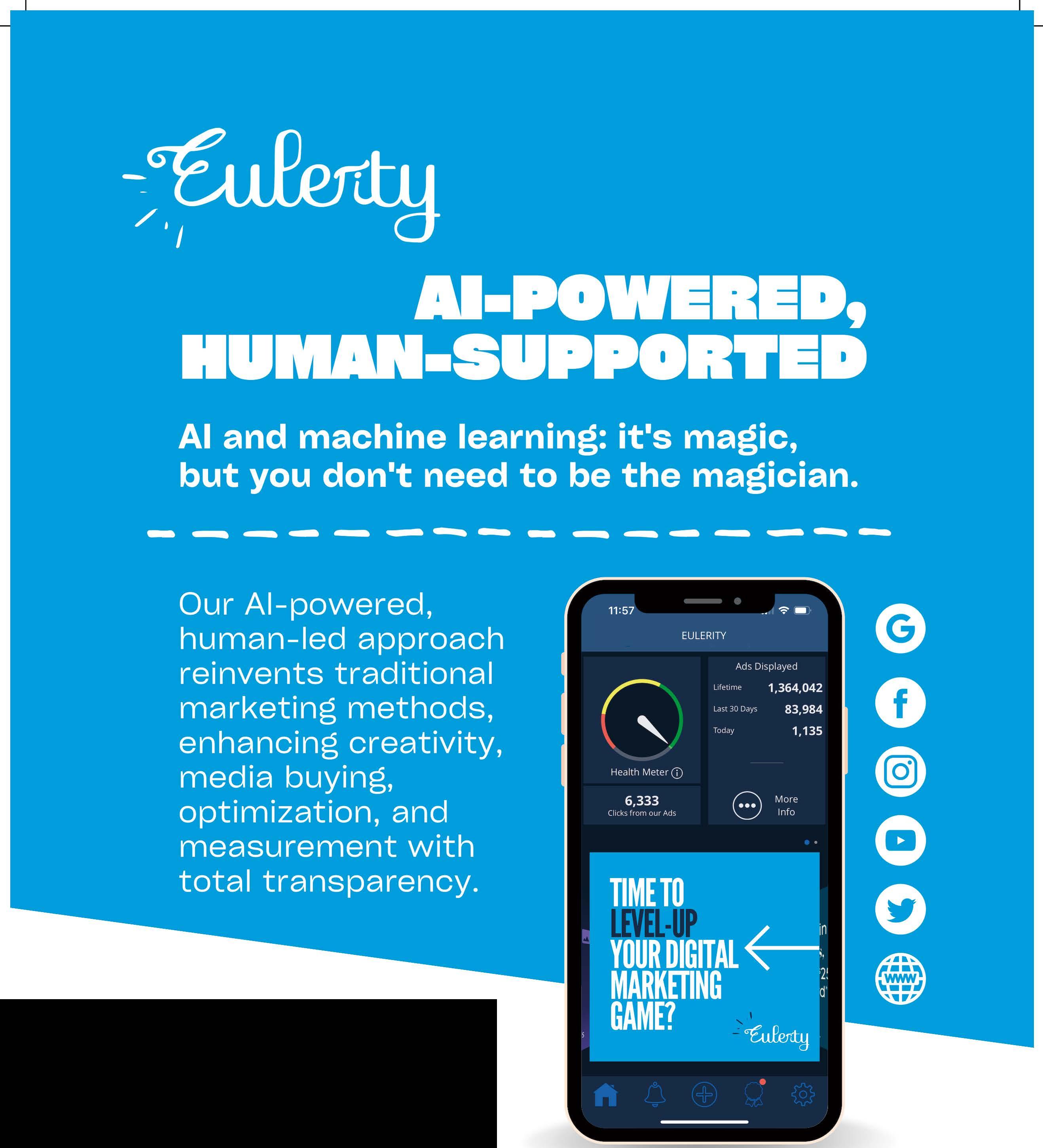
It’s in everyone’s best interest for us to determine as quickly as possible if a prospect is a good fit to be a Zaxby’s franchisee, so we set up our process with that in mind. We start with a short, automated form where we ask questions that will tease out initial deal-breakers: liquidity, net worth, and experience. If they don’t meet our requirements, they will get an automatic response thanking them for their interest and letting them know they don’t currently meet the criteria to own a Zaxby’s.
Next, we move to our “Get to know you fast” phone call. This is a 5- to 15-minute call—tops. Again, we don’t want to waste anyone’s time. In that call, we quickly reestablish financial stability and industry experience in operations and development. I prefer QSR experience, but I also ask them to tell me what they’ve built, grown, or developed. If they can’t do that, they aren’t a good fit. We want proven developers. We also ask them how involved they plan to be in the business. That is big at Zaxby’s. We want owner involvement.
If I hear any red flags in that phone call, I am able to tell them over the phone immediately we are not a good fit. There is no point in dragging it out. If they are a proven developer with industry experience, it’s time for the next steps. From here, if they sign the FDD and are successful filling out the application and screening, there is a good chance we have a match. If at any time during that process it becomes evident they are not aligned with our brand’s vision, values, and goals, we will let them know with a personal phone call that it is time to part ways.
A good franchise prospect for us is someone who combines financial stability, a shared passion for the brand, strong business acumen, a willingness to follow the system, commitment, strong operations skills, and a solid understanding of the local market. If we determine those are missing, we communicate that as quickly and professionally as possible.

A good franchise prospect for us is someone who combines financial stability, a shared passion for the brand, strong business acumen, a willingness to follow the system, commitment, strong operations skills, and a solid understanding of the local market.
BERT LANE
Vice President of Franchise Sales Zaxby’s
What is the best way to sell franchises? Since the answer evolves over time, franchise salespeople also must evolve. The following five “power selling secrets” for franchise systems are designed to give you new, powerful tools to be successful. They should not be confused with a complete sales methodology that involves qualifying buyers, handling objections, and other selling basics. I’ll assume you and your sales team already have those skills. Let’s dig a bit deeper.
Secret #1: Detach
As Bob Gappa of Management 2000 says, “You award franchises. You do not sell them.” The goal in franchising is finding the right person for your system, not just a buyer. Your goal is to find the right match, not to make the sale. But you know this.
Not being attached to the outcome is about your state of mind. If you come from a need or desire to make a sale, your energy and emotional connection with the prospect will be tarnished. The prospect will feel your pressure. The only way to resolve that problem is not to be attached to closing the prospect. Instead, focus on really understanding prospects in a neutral way and supporting them as they learn about your opportunity. This shifts you from being a salesperson to a trusted advisor.
Secret #2: Listen
My good, late friend Dave Gheesling used to have a saying: “Don’t spill your marbles in the lobby.” What he meant was that if you are a salesperson going to a meeting, don’t be so excited that you share everything in the lobby before getting to the meeting room. Your first goal when connecting with a prospect is to get to know them and to understand their dreams and vision. Go deep into
their story and understand their “why.” If you do this, you will connect and build trust in a very deep way.
Secret #3: Be neutral
There’s a tendency for salespeople to try to come off as a confidant and speak in a way that the prospect feels the seller’s confidence. That may seem to make sense, but it is not the most effective way to create a strong bond. It clearly defines you as a sales person, not a trusted advisor. It’s better to create a feeling of safety so a prospect feels comfortable and will open up. Let them know from the beginning that you may or may not have their solution. Here are some examples of statements that reinforce this deeper connection:
• “I look forward to talking to see if we possibly have the right opportunity for you.”
• “I just want to let you know that we may not be the right fit. I’m focused on helping you determine that. If you end up deciding we’re not a good match, I’m okay with that.”
• “Before we continue, just so you know, I’m going to ask you a lot of questions to determine if we’re a good fit or not.”
Secret #4: Connect
I’m sure you’ve heard the adage, “People buy with emotions and justify with facts.” Yet most salespeople focus on facts, details, and features. If you connect emotionally, you will significantly improve your results. Here are some examples of probing questions to bring out emotions:
• “You’ve mentioned that you’d really like to be a business owner. How would that make you feel?”
• “Starting a new franchise is a big project. How are you going to feel on the day you open?”
• “Five years from now when you’re looking back at what you successfully accomplished, describe how that will make you feel.”
We tend to do the selling, which can lead prospects into resistance mode. If we change the dynamic so prospects sell themselves, our likelihood of success improves astronomically. This is done by asking the right questions in two phases. First, ask questions that encourage prospects to define their goals. Do this by asking questions such as:
• “What are you trying to achieve by buying a franchise?”
• “What are the things you’re looking for in choosing the right franchise to buy?”
• “What type of franchise system do you think would be ideal for you and why?”
Second, ask questions that encourage prospects to validate that your franchise will help them achieve those goals (or not):
• “You’ve seen a presentation of our franchise system. Can you tell me what about it would make you feel comfortable that it will let you achieve your goals?”
• “When we talked earlier, you mentioned _____ and _____ that were important to you in making your decision. Did you see those things in our franchise opportunity? Why do you think owning our franchise would help you reach those goals?”
• “Please share with me why you think our franchise concept would be a good fit for you.”
Selling is an ever-progressive skill, something we get to keep working on. Shifting from being a salesperson to being a trusted advisor is key to succeeding. These five power selling secrets are designed to help you achieve exactly that.
Evan Hackel is CEO of Ingage Consulting and Delta Payment Systems and an advisor to Tortal Training. He is an author, speaker, and entrepreneur who has been instrumental in launching more than 20 businesses and has managed a portfolio of brands with systemwide sales topping $5 billion. He is the creator of Ingaged Leadership and author of Ingaging Leadership Meets the Younger Generation. Reach him at ehackel@ingage.net, 781-820-7609, or www.evanhackelspeaks.com.





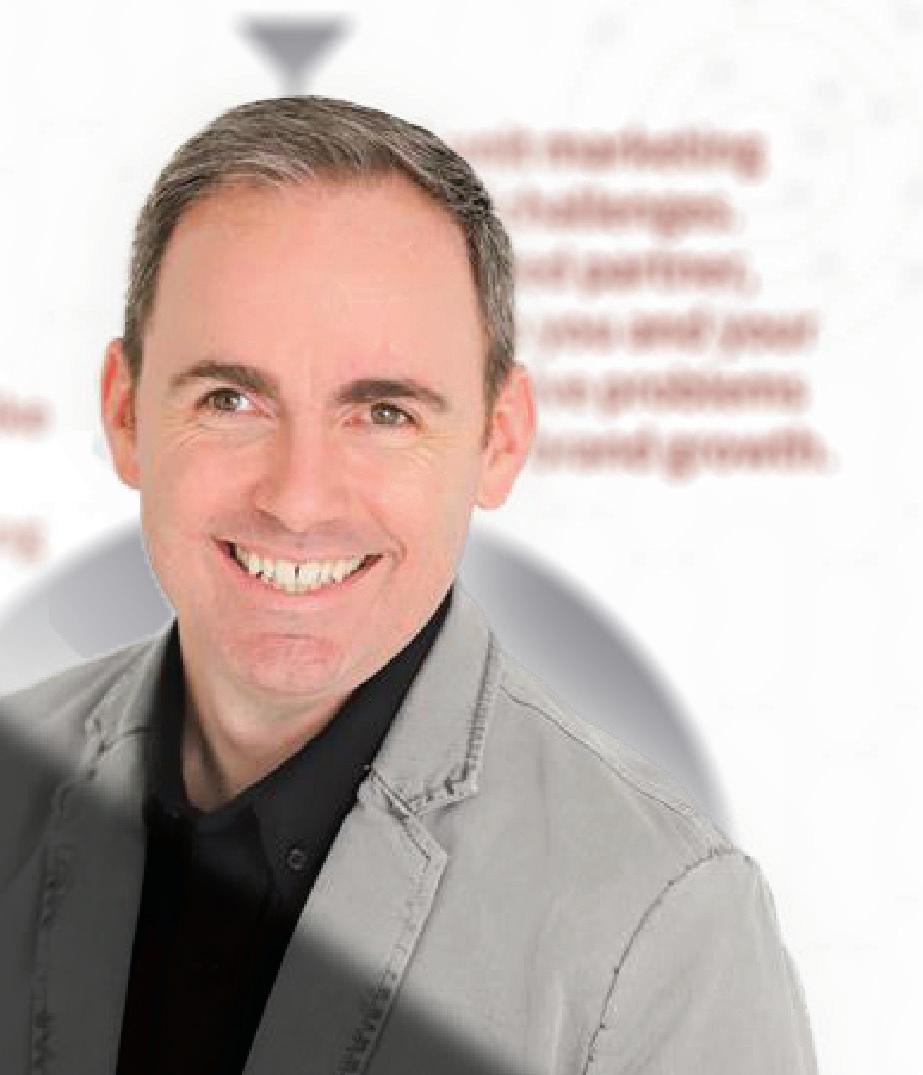













For most of you, marketing comes down to a share-of-wallet battle, and you’re good at it. That was an appropriate philosophical approach during the past decade or so, when the economy was consistently rising and people generally had jobs and money. It even worked after the first year of the pandemic as government payments supplemented most peoples’ incomes.
We’re currently in a very low unemployment period, so it’s logical to assume wallets are still filled with money, and that you should aim your marketing campaigns at getting your share. However, the times they are a-changin’, and if you want your future marketing efforts to be effective you need to do more research. These statistics should compel you to want to know more about your target audience:
• 60% of Americans live paycheck to paycheck
• 70% of Americans feel some form of financial stress
• Wages are growing, but still at a slower pace in the face of inflation
• Nearly 1/3 have more credit card debt than emergency savings
• Minimum wage has not increased in 27 states
• 75% worry about future layoffs; almost 40% fear for their own employment
Do any of your target consumers touch these categories?
Unless you’re the federal government, there is a rational limit to how much further consumer debt can continue on its current trajectory. Delinquency stress is beginning to show itself. Expect student debt to jump dramatically as the student loan repayment pause looks to be ending. If your target consumers are part of these statistics, their wallets are getting thinner—further compounded by the dramatic rise in the cost of carrying their growing debt. Interest rates are up 5% or more across debt categories. So what should you do to build marketing messages that will be effective?
First, understand how much money will likely be in the wallets of the consumers you’re targeting over the next 12 to 24 months. While the aggregate numbers (mortgages, HELOCs, auto loans, credit cards, student loans, etc.) get our attention, we are advising and helping our clients to go deeper into the data to know how best to position their marketing and get a better handle on unit sales expectations. Consumer financial conditions are becoming more uneven.
Annual wage growth across U.S. states ranges from a negative 2.3% to a positive 7.1%. Unemployment rates range from 1.9% to 5.4%. Those are big swings. Obviously, geography matters, so messaging may have to adapt to regional and local economic conditions.
Second, understand how demographics have shifted since the pandemic. After the Great Financial Crisis of 2008, almost everyone sharply reduced discretionary spending.
However, few anticipated that Millennials considered personal service expenses as a necessary expense, shepherding in a decade of fast growth in salons, fitness, and related businesses in the personal services sector. Millennials didn’t behave as expected.
Now we have another generation to sell to—and some would argue Gen Zers don’t behave at all. As unappealing as it may seem to some of you, get into their heads. They’re wired differently, and the pandemic is changing preferences across all generational groups. If they’re part of your targeted consumers, understanding how each of these groups views the world today is a key to successful marketing campaigns.
Finally, understand you are not marketing against a defined set of competitors in 2023. In the past 12 months, we’ve identified 446 new franchise brands indicating an intention to franchise through an FDD filing. That’s almost double the pre-2020 figure. Further, 35% of these 446 are well-funded platforms and/or private equity, and many have experienced franchise management teams. Some are bringing new operational solutions to the business model itself, not least of which is in technology applications. It’s best to know something about what they’re bringing to the table.
Successful marketing over the next year or two will require you to conduct deeper research than you needed during the fairly predictable past decade. So, I come back to the question of the day. What’s in their wallets?
Darrell Johnson is CEO of FRANdata, an independent research company supplying information and analysis for the franchising sector since 1989. He can be reached at 703-740-4700 or djohnson@frandata.com.
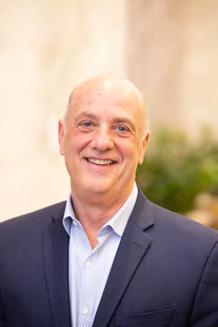


Coming out of the pandemic, doing business in other countries has both changed and stayed the same. With this in mind, experienced international experts provided advice on doing business successfully in key franchise countries today. The common factor for success remains building relationships.
Australia. While the U.S. and Australia speak English, there are language and cultural differences. Australians tend to be straightforward and open to new ideas. Communication and meetings are often informal, but don’t misconstrue: Business is serious, and Australians are both friendly and hardworking. They frequently use slang and abbreviations, which, when combined with local accents, may occasionally leave you with the impression you are speaking different languages. (Alison McElroy, CEO, Kaleidoscope Growth Advisors)
Japan. Companies here respect and value face-to-face meetings. Several may be necessary during due diligence. If practical, several members of the Japanese management team will attend all meetings. The franchisor should include the appropriate counterparts when practical. Japanese prefer to communicate indirectly, which may serve to avoid focus on an apparent difference or disagreement. The direct yes-or-no or takeit-or-leave-it approach common in the U.S. usually is not appropriate or comfortable to the Japanese. (Robert Shaw, CEO, Shaw Meridian)
Latin America. Family ties can be stronger than business ties here. For franchise recruiting, it’s important to consider the succession plan with adult children or other relatives. I’ve seen deals come apart after considerable negotiation when the chosen next-generation family leader is brought in late in the process and feels obligated to exert influence by disapproving a deal. Remember to be respectful of the many different national identities in Central America. (Marc
Mushkin, VP, international franchise sales and development, CKE Restaurants)
Saudi Arabia. Despite Saudi Arabia adopting numerous Western business methods and styles, many cultural differences remain. Most important is that business generally will be conducted only after a degree of trust and familiarity is established. Saudis often maintain an “open office” in which they will sign papers, take telephone calls, and converse with friends or colleagues during business meetings. (U. S. Commercial Service Country Commercial Guide)
Spain. When a U.S. company wants to develop in Spain, the personal relationship is more important than the contract. North Americans often like to conduct business rapidly and place a high level of confidence in the contract. Spaniards, however, place more faith in the relationship. To be successful, Americans must invest time (and money) to develop that relationship. This could include long lunches or dinners where personal, non-business matters are discussed. It may take several trips and phone calls before meeting in person with the Spanish businessperson with the power to make decisions. (Robert Jones, chief international officer, Edwards Global Services)
United Kingdom. Quality candidates here will be numbers-focused. “Is the proposition profitable?” They will also want to ensure cultural alignment with the franchisor. “Can we work with these people?” Meeting socially and getting to know key team members is important. They will be looking for the franchisor’s commitment to a long-term, profitable relationship. Large initial fee expectations don’t play well here. Candidates will expect to see comprehensive briefing documents and financial models. (Iain Martin, senior consultant and director, The International Franchise Centre)
Vietnam. Greet people with a handshake and a smile. (Handshakes usually take place only between members of the same
sex.) Schedule meetings in advance and show up 5 to 10 minutes early. When speaking English, speak slowly and clearly and repeat if necessary. A Vietnamese interpreter is very helpful. Business partners are expected to dine with their Vietnamese counterparts. If you are visiting during a national holiday, it is best to give a simple, inexpensive gift. (Sean
Ngo,CEO and co-founder, VF Franchise Consulting)
Here are some “doing business successfully” points I’ve learned the hard way over three decades of awarding franchises in three important franchise countries.
Brazil. Lack of punctuality is a fact of life. Be flexible about your counterpart’s (lack of) punctuality for meetings. When negotiating, be very patient and expect a series of discussions and/or trips to conclude an agreement. Negotiation becomes highly personal. Direct and aggressive negotiation is viewed as a major negative.
China. Punctuality for all appointments is important. Americans are typically viewed as impatient, so be prepared for longer negotiations. Everything is negotiable. Sometimes, it happens at the 11th hour or on your way to the airport. Then, once the deal is signed, they start negotiating again.
India. Indians appreciate punctuality, but do not always practice it themselves. Business is highly personal and negotiations are less hurried than in the U.S. For business decisions, get to the top of the company. Negotiations and bargaining are inherent to Indian culture.
Doing business in different countries is both the same and different than doing business in your home country. Knowing the differences can determine whether or not you are successful in taking your franchise into new markets around the world.
William (Bill) Edwards is CEO of Edwards Global Services and a global advisor to CEOs. With four decades of successful international business experience spanning virtually every corner of the world and across many business sectors, he is uniquely qualified to steer senior executives successfully through the complexities of going global. Download his quarterly GlobalVue 40 country ranking chart at https://edwardsglobal.com/globalvue. To learn how to take your franchise global successfully, contact him at +1-949-224-3896 or bedwards@edwardsglobal.com.













When I ask a question about numbers, it typically gets answered by someone telling me how many signings have been secured. Nothing wrong with that. We can only grow our brand through unit signings with the highest-quality franchisees.

However, if you are not plugged in to what is happening at the top of the funnel, measuring results and adjusting accordingly, you will find your results all over the place and your marketing dollars wasted. If you want to be able to forecast accurate results over the next 90 days, that knowledge is necessary.
Let’s look at top-of-the-funnel ratios for the sales or discovery process. Open the tools you use for measuring and analyzing new franchisee recruitment data. Use your CRM or a spreadsheet.
I’ve listed the top-of-the-funnel key ratios and conversion percentages every development manager and leader should be tracking and managing against. By doing this exercise, you will increase results and signings at the bottom of the funnel.
1) Lead to scheduled Step 1. How many suspects or leads who reach out to your brand
are communicating with a member of your team and scheduling a 45- to 60-minute Step 1 call?
YOUR RESULTS: (PAST 90 DAYS)
TARGET: 35–40%
INDUSTRY: <10%
Notes: This is for a scheduled Step 1. Out of 100 leads at the top of the funnel, 35 to 40 should agree to a date and time to talk with a recruiter. If your lead volume is dominated by broker candidates, the conversion can be as high as 95%.
2) Scheduled to a kept Step 1. What percentage of individuals who schedule a Step 1 are keeping that appointment?
YOUR RESULTS: (PAST 90 DAYS)
TARGET: 75–80%
INDUSTRY: <40%
Notes: A kept Step 1 call is one of the most precious events in the discovery process. Most brands are not paying enough attention to how many leads are converting to a kept Step 1. Huge mistake. Why? Because this is where the marketing part of the process separates from the sales part. Once a kept Step 1 occurs, your marketing worked. Marketing does not get you signed franchise agreements. Your sales process, starting with your Step 1, is where signings come from.
Lead generation is becoming more expensive. Hitting your signing targets will require better performance at the top of the funnel. Find out how your team is performing. Tracking the results will create discussion and actions to improve.
Let’s go to work!
Art Coley is CEO of CGI Franchise. Using the proven Recruitment Operating System (ROS), he and the ROS team help franchise companies implement and execute a predictable, repeatable, and sustainable franchisee recruitment program. CGI Franchise is based in Temple, Texas, and works with brands worldwide. Contact him at acoley@ cgifranchise.com or 281-658-9409.
MFV FRANCHISE EXPO SOUTH
September 8-9 | Ft. Lauderdale, FL
Partnership event with MFV Expositions/Comexposium
IFA ADVOCACY SUMMIT
September 11-13 | Washington, DC
FRANCHISE LEADERSHIP AND DEVELOPMENT CONFERENCE


October 18-20 | Atlanta, GA
Partnership event with Franchise Update Media
EMERGING FRANCHISOR CONFERENCE



November 1-3 | New Orleans, LA
2024 IFA ANNUAL CONVENTION
February 17-20, 2024 | Phoenix, AZ
FRANCHISE.ORG/EVENTS































































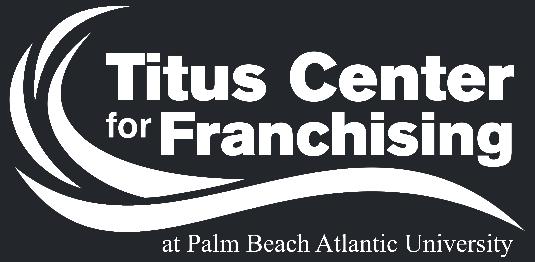



























dokshop serves as your centralized marketing hub for end-to-end brand management and logistics solutions.

Gone are the days of inefficient and tedious management of marketing production, fulfillment, and inventory - enable all of your locations to have control over their branded collateral needs on-demand.
To learn more visit poweredbyprisma.com